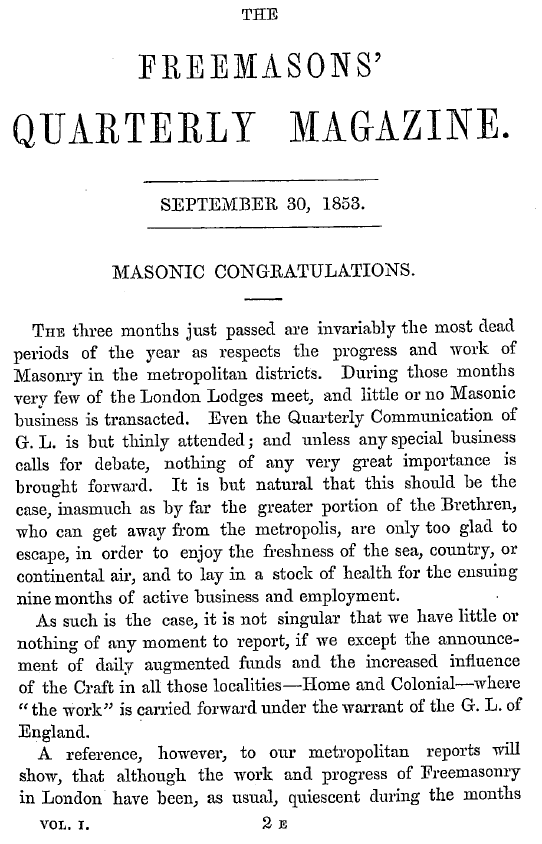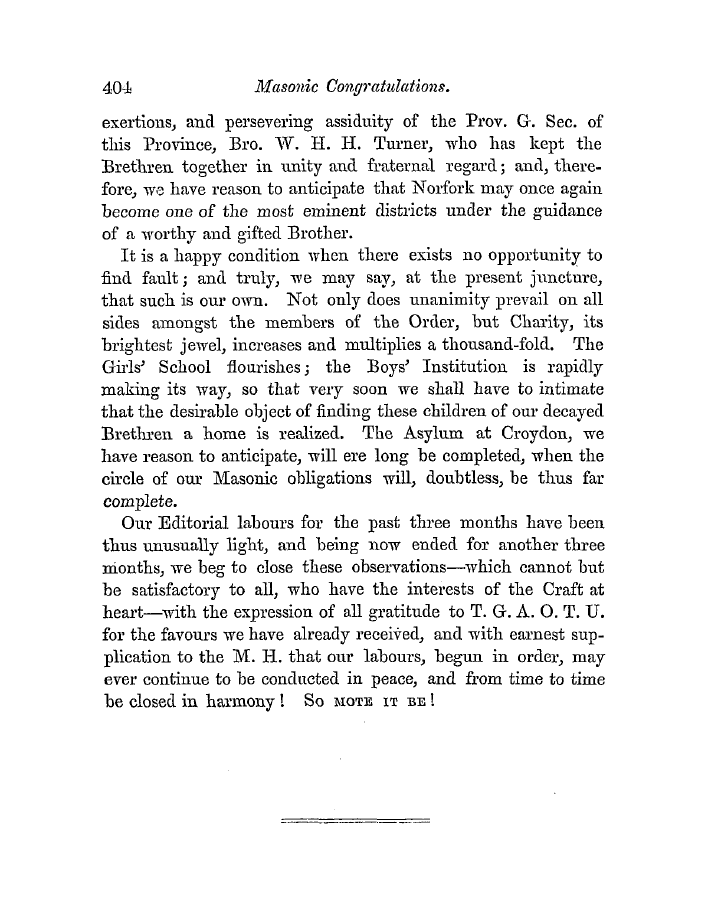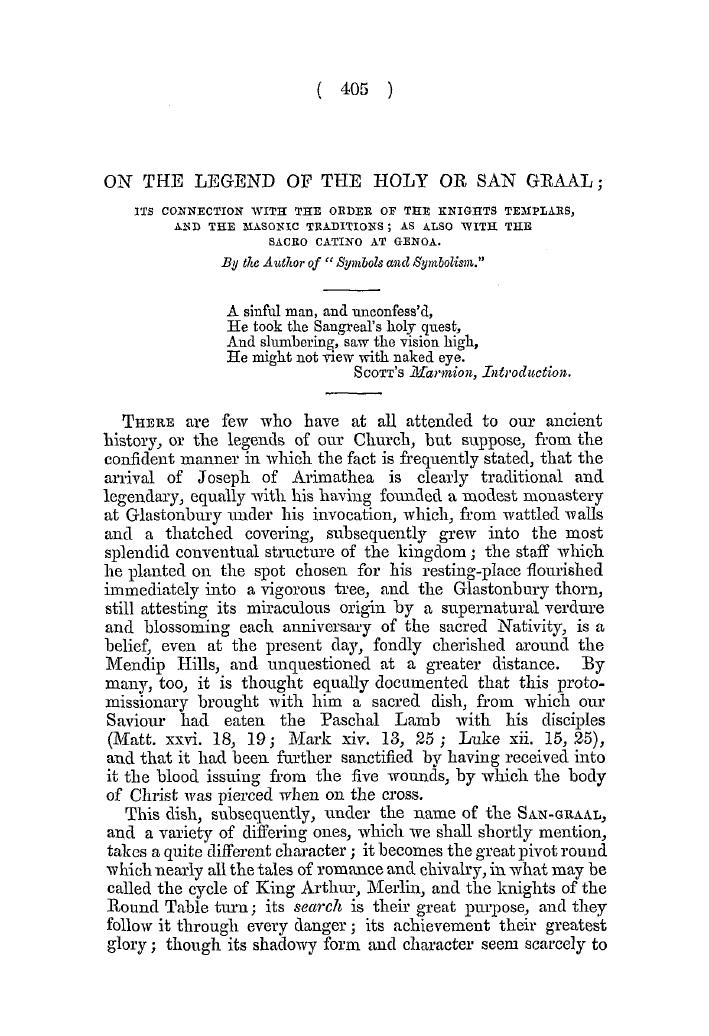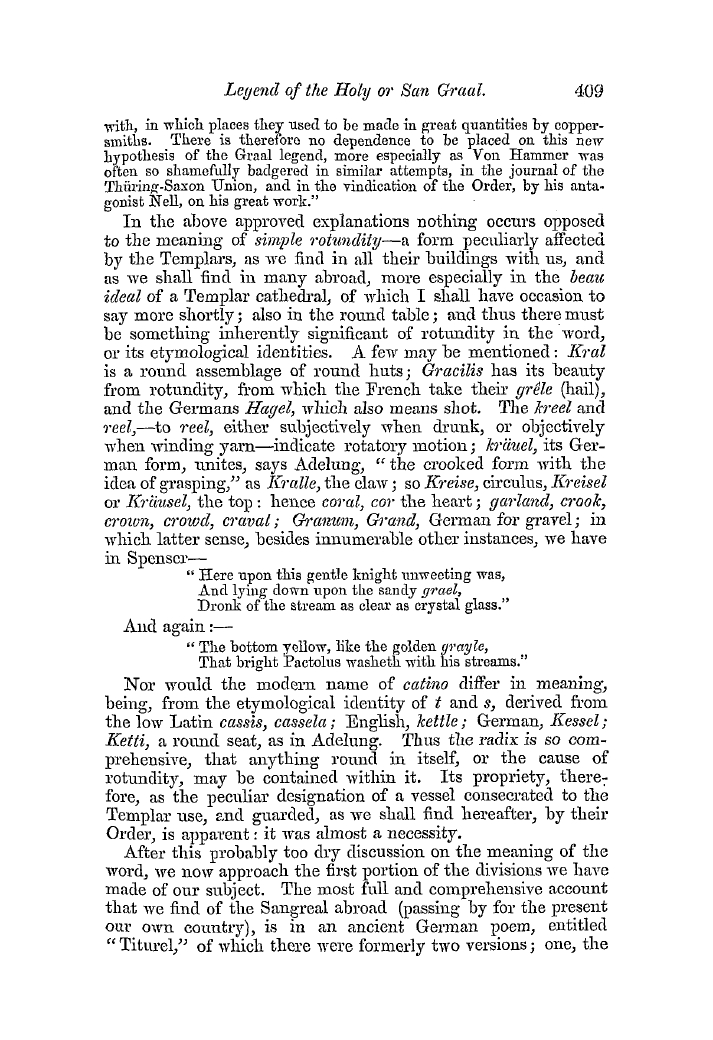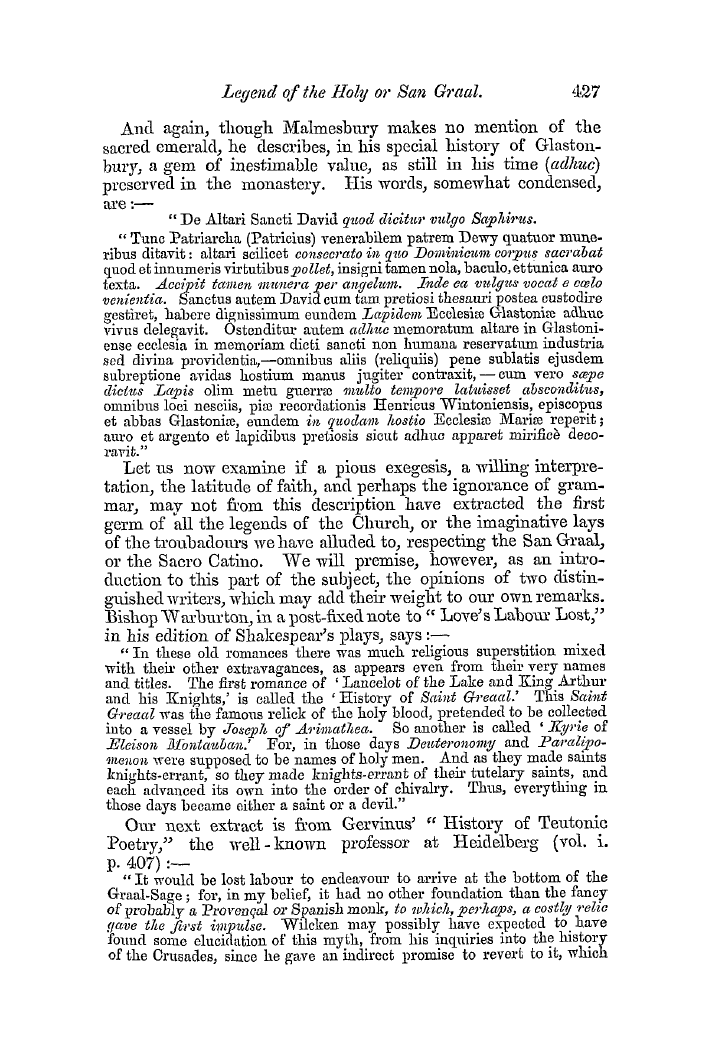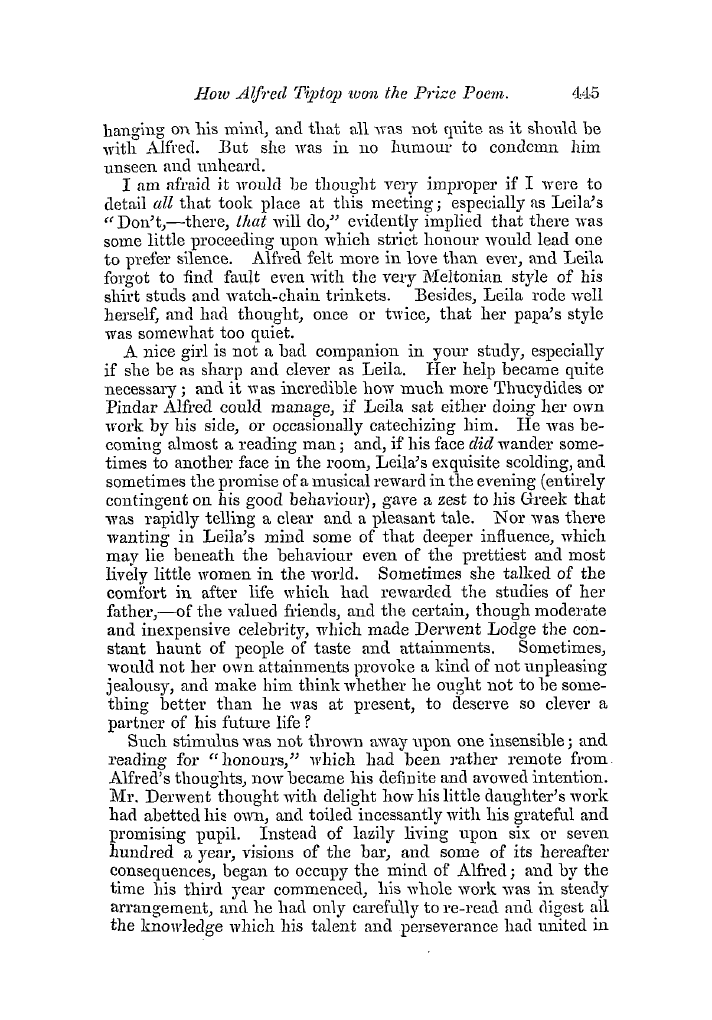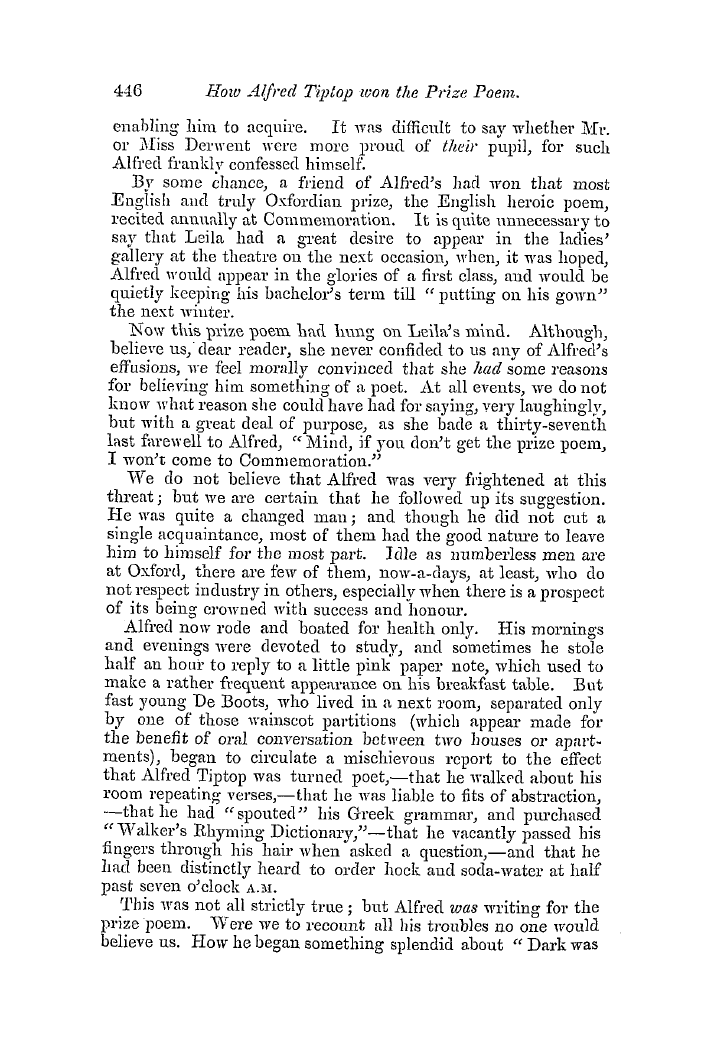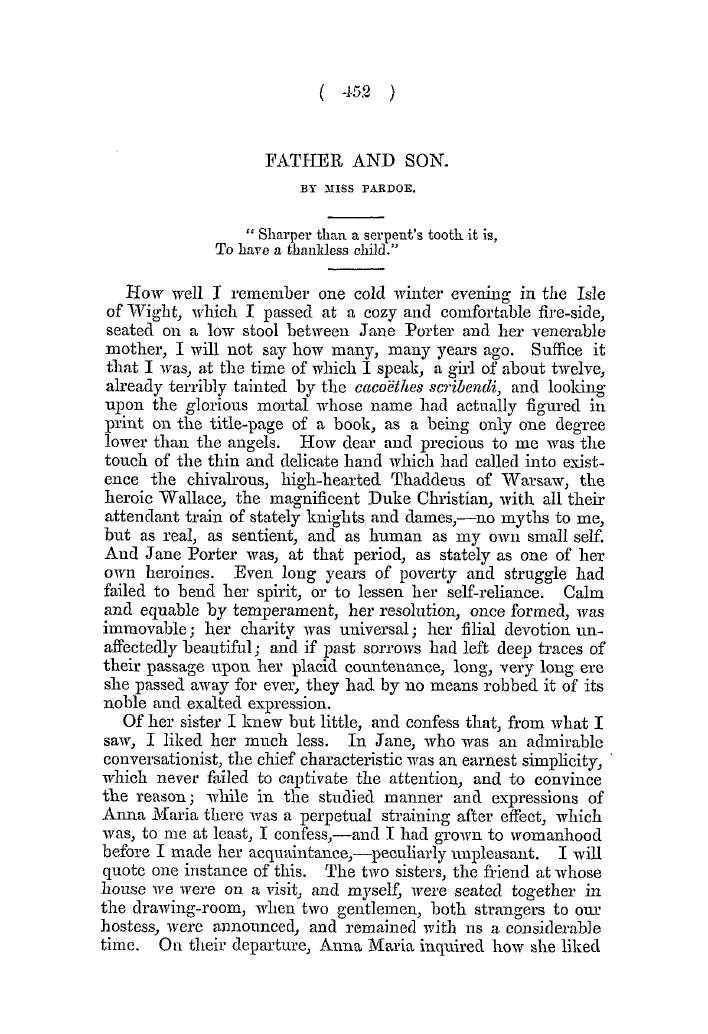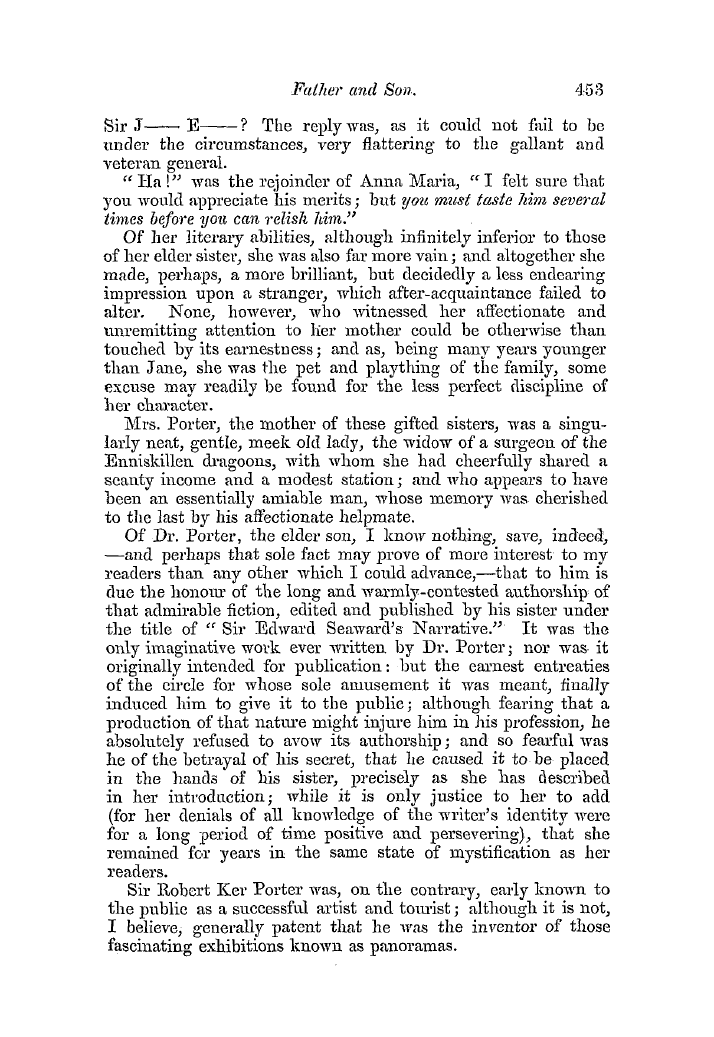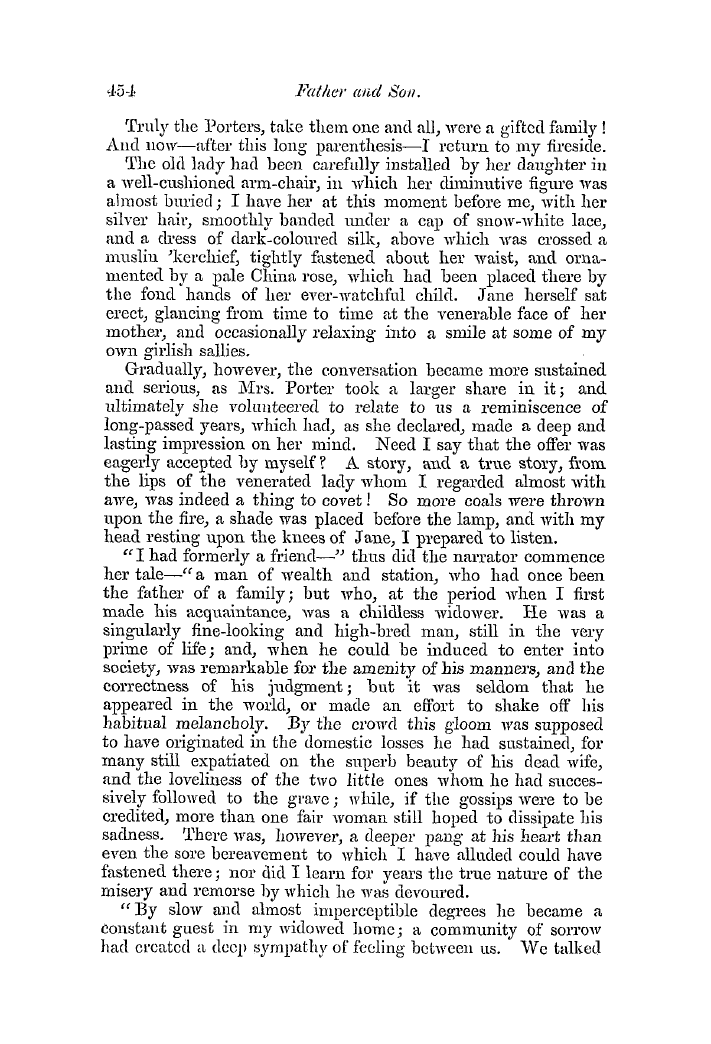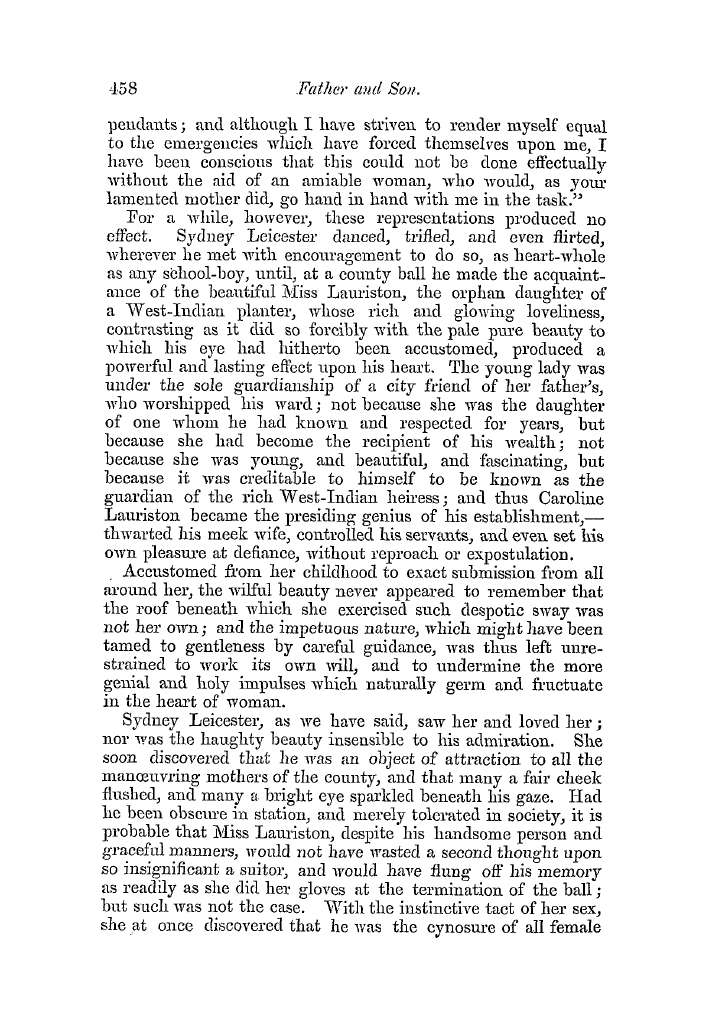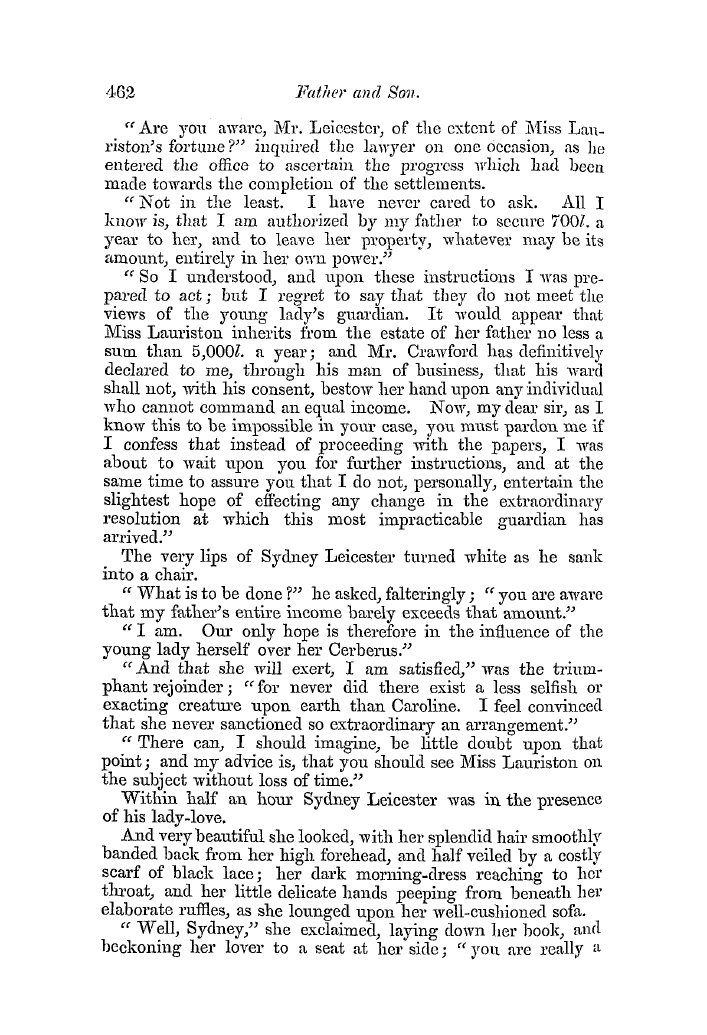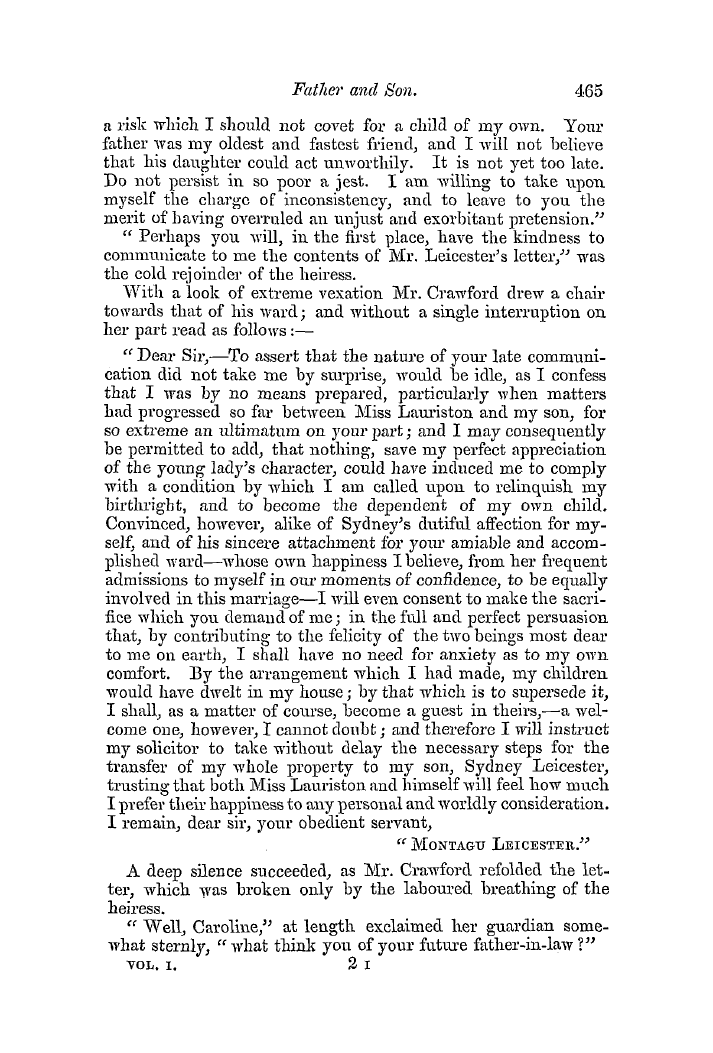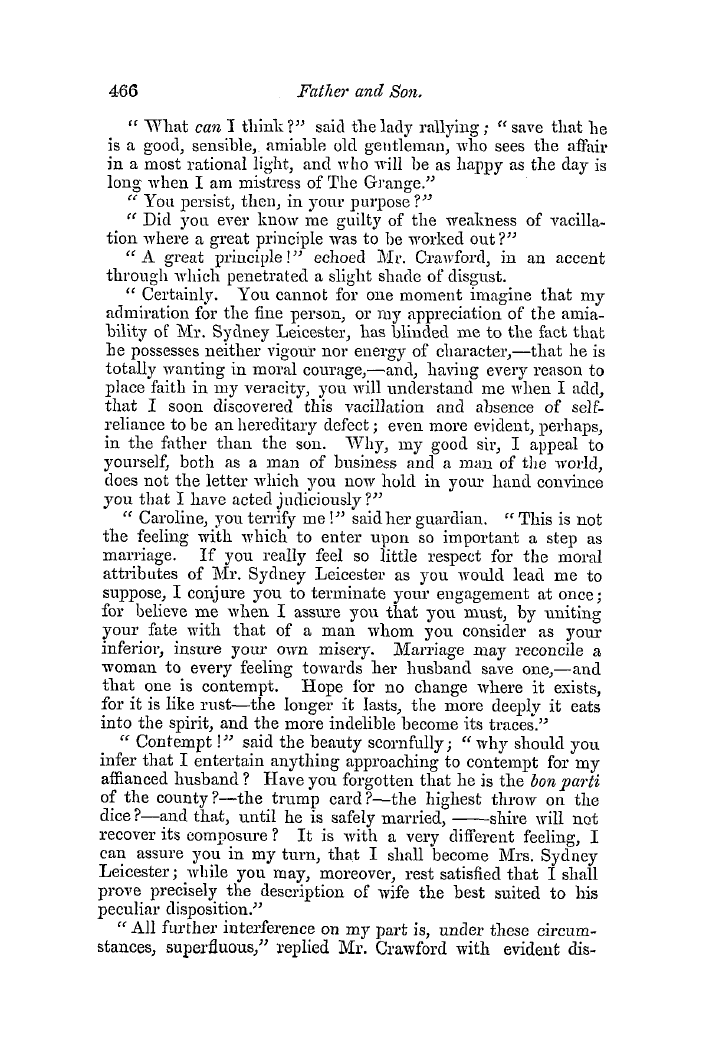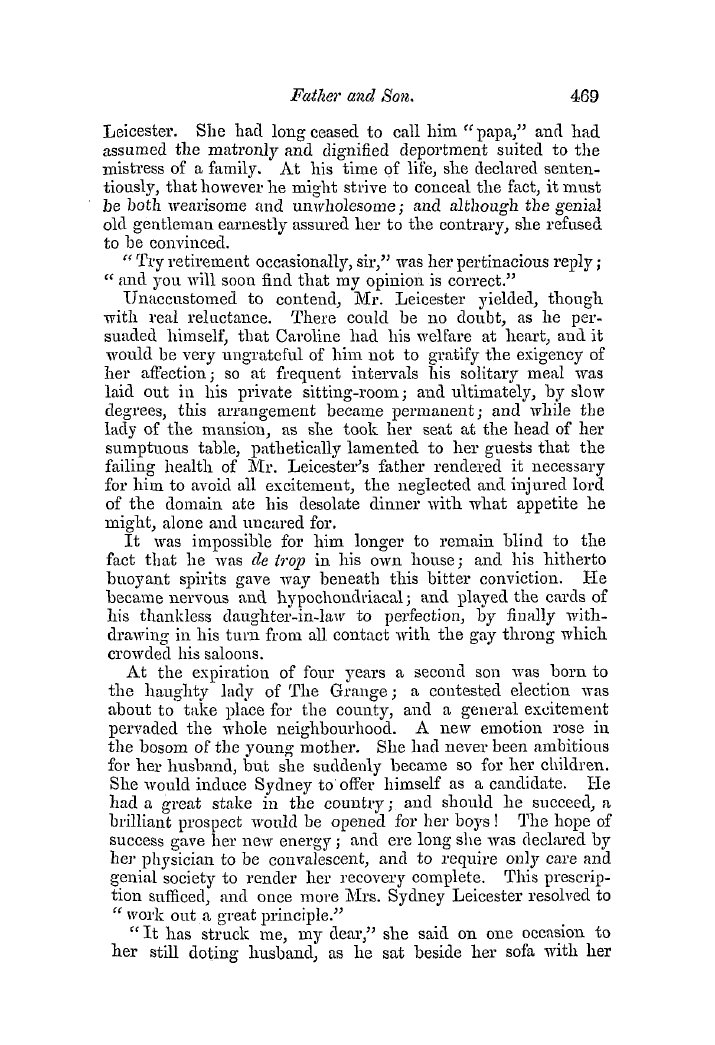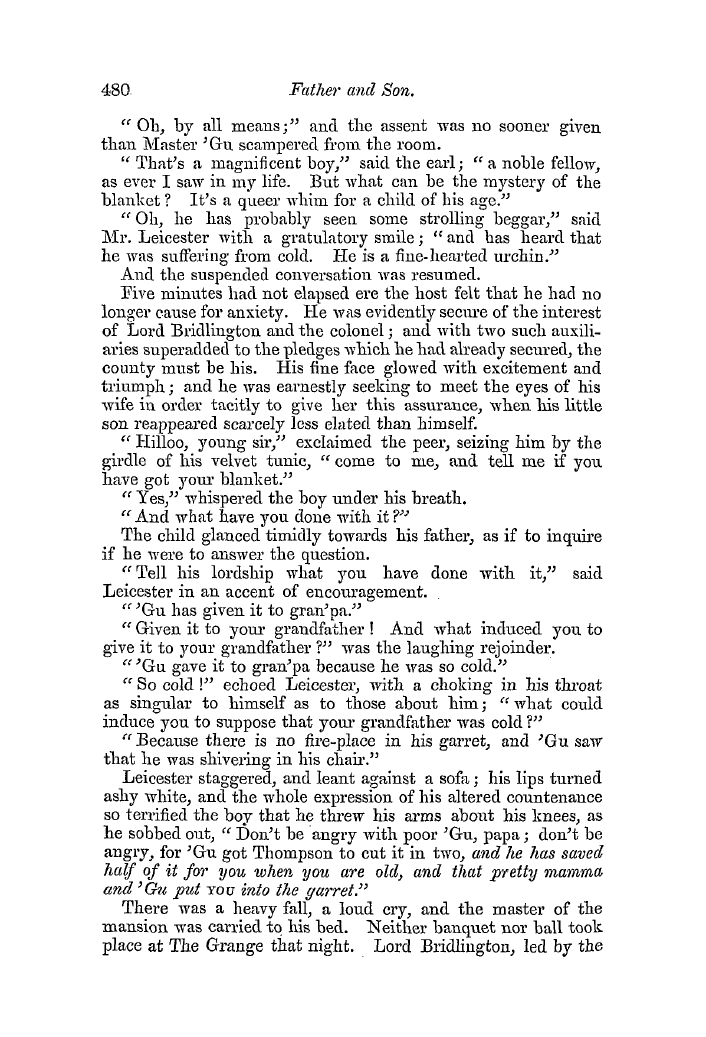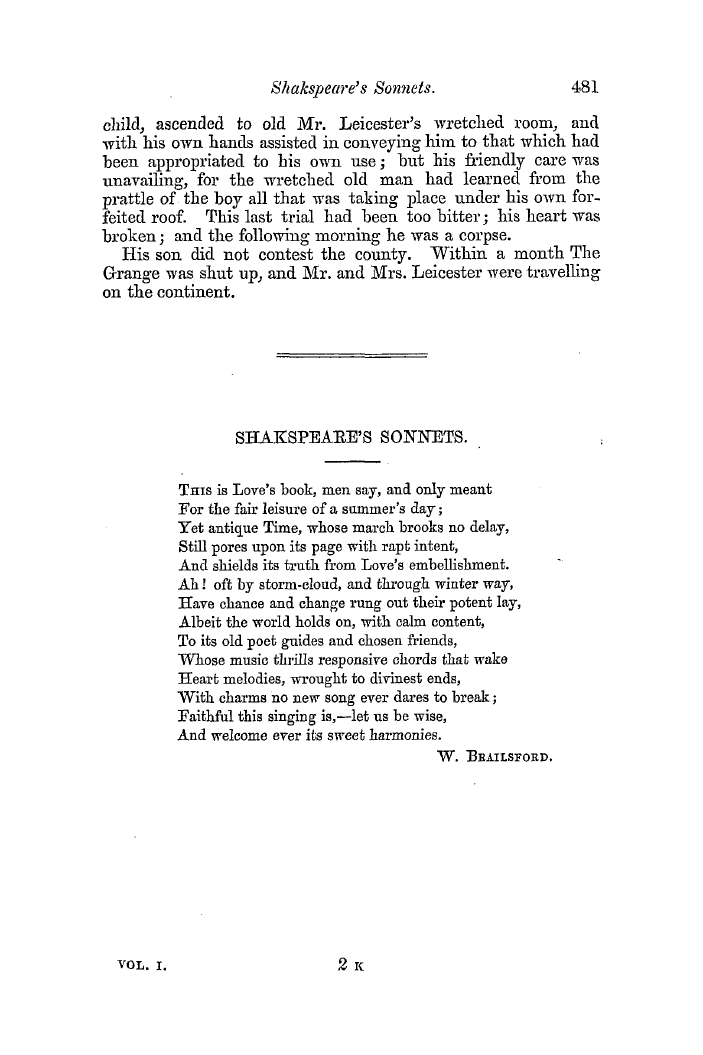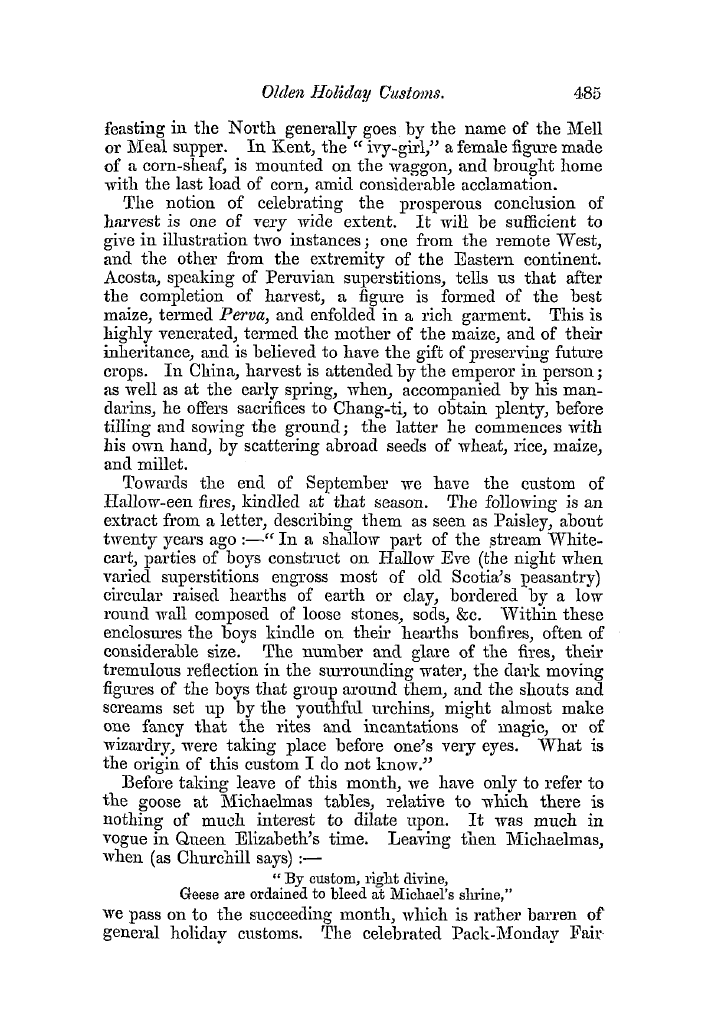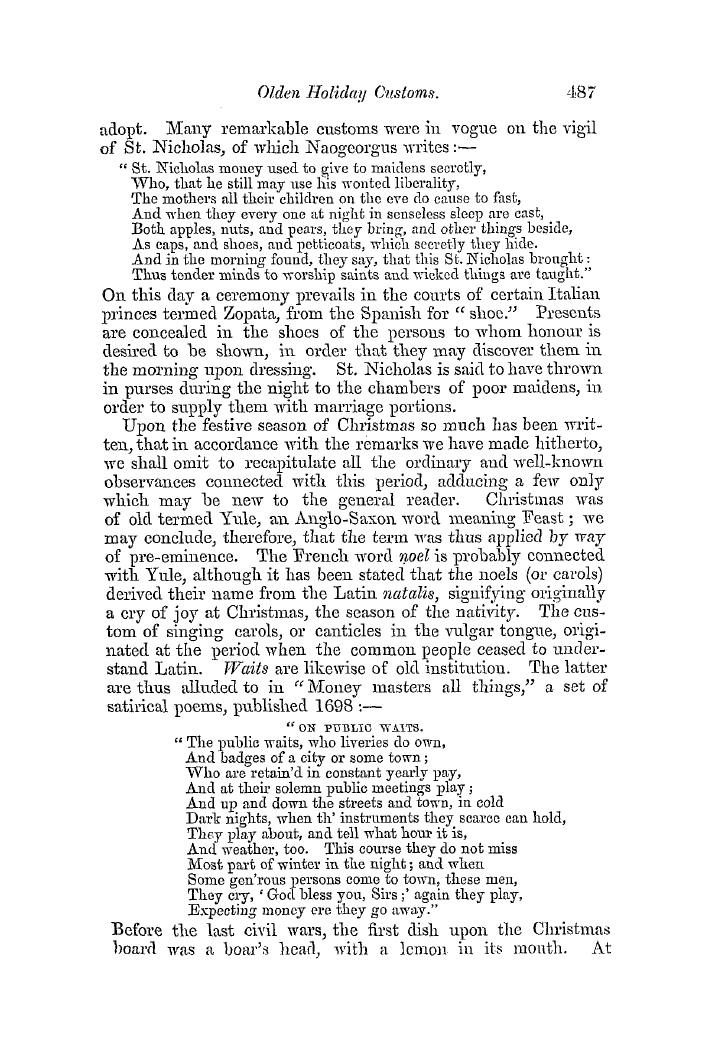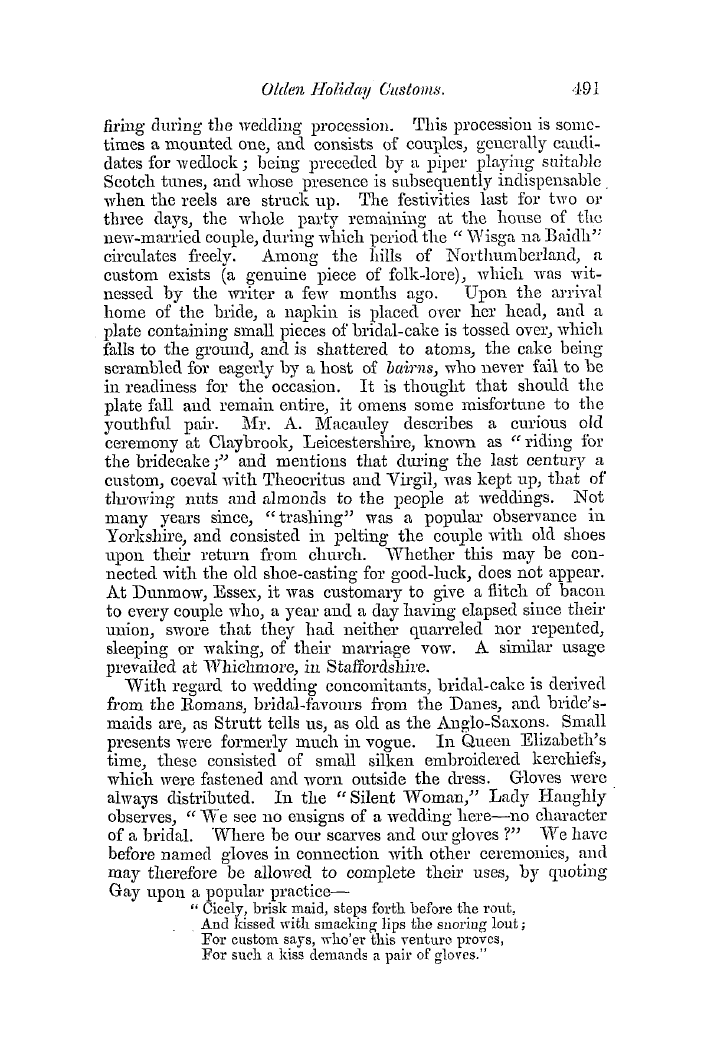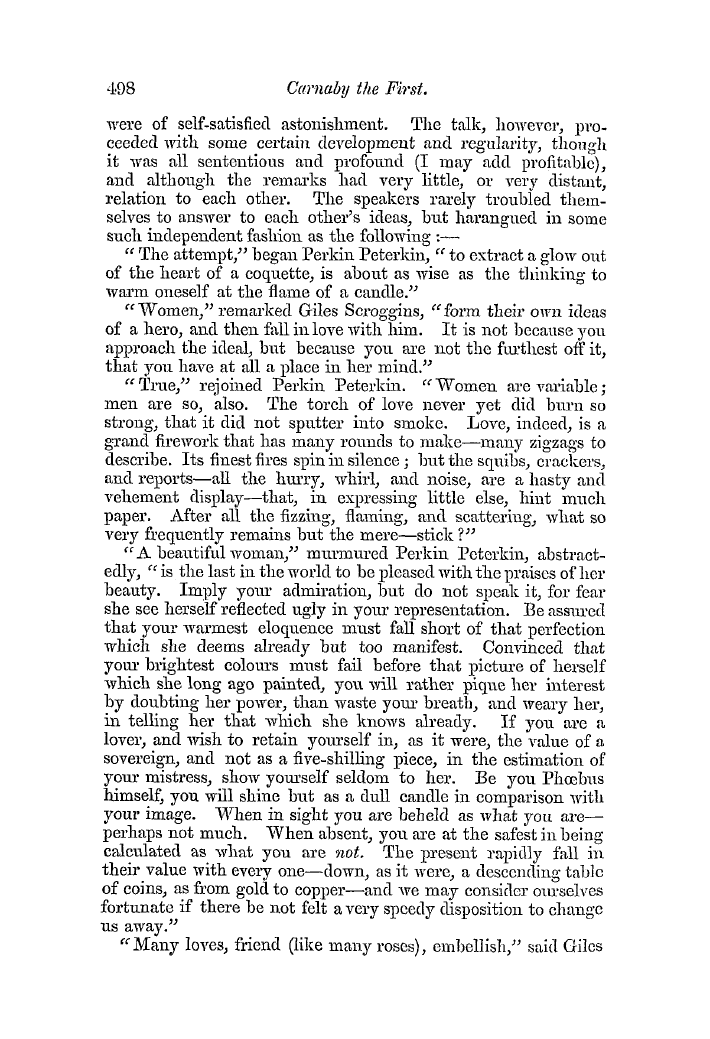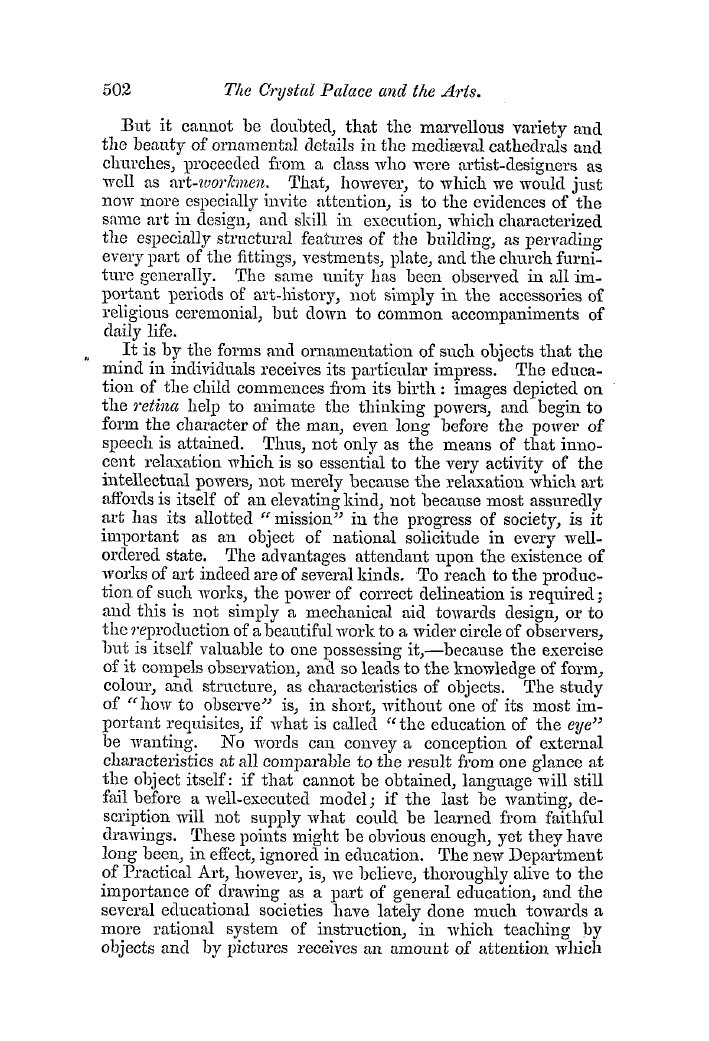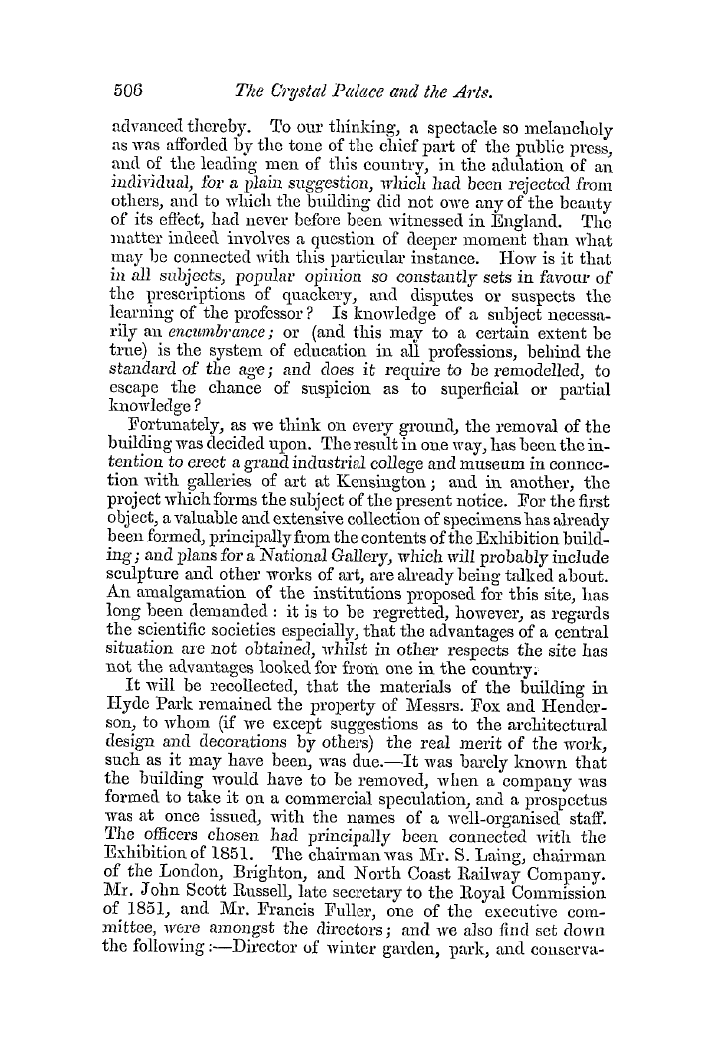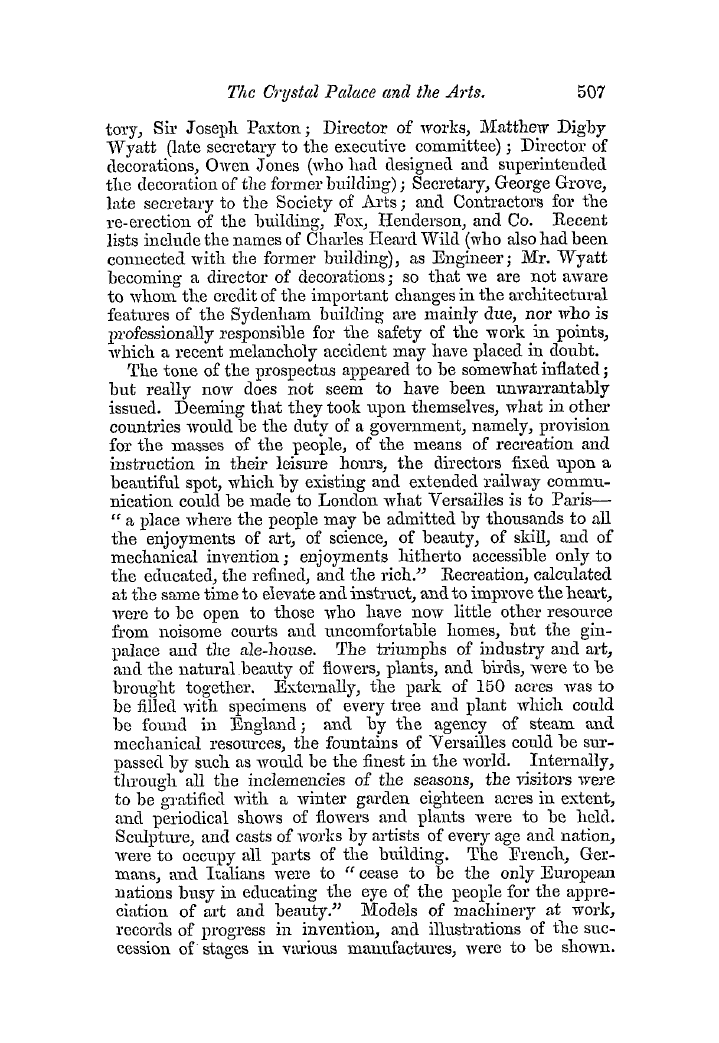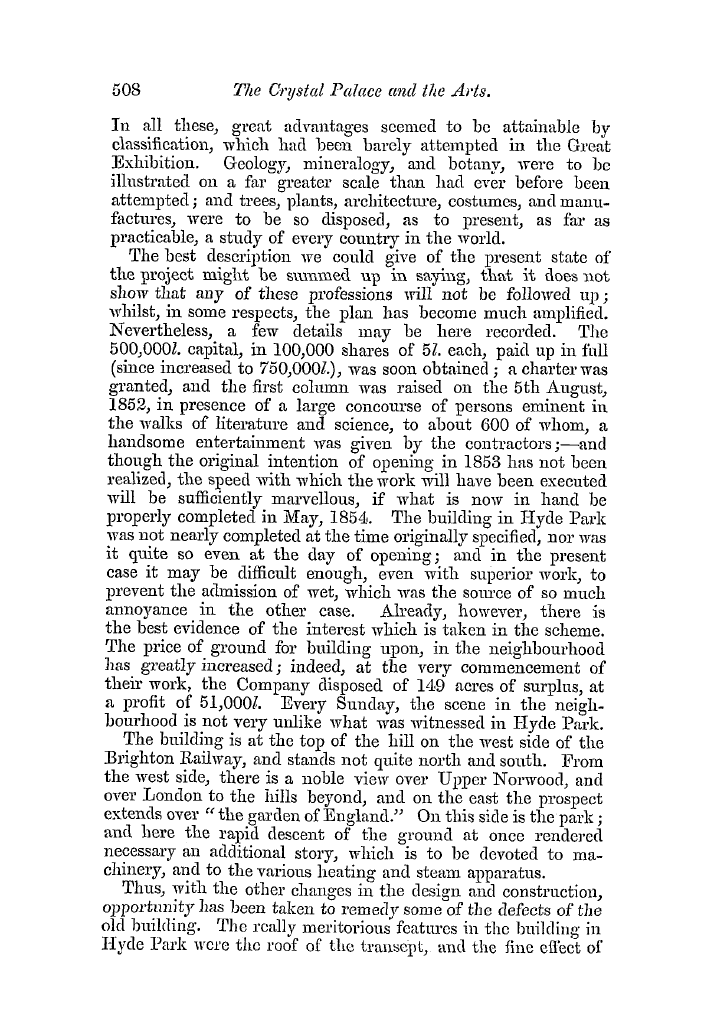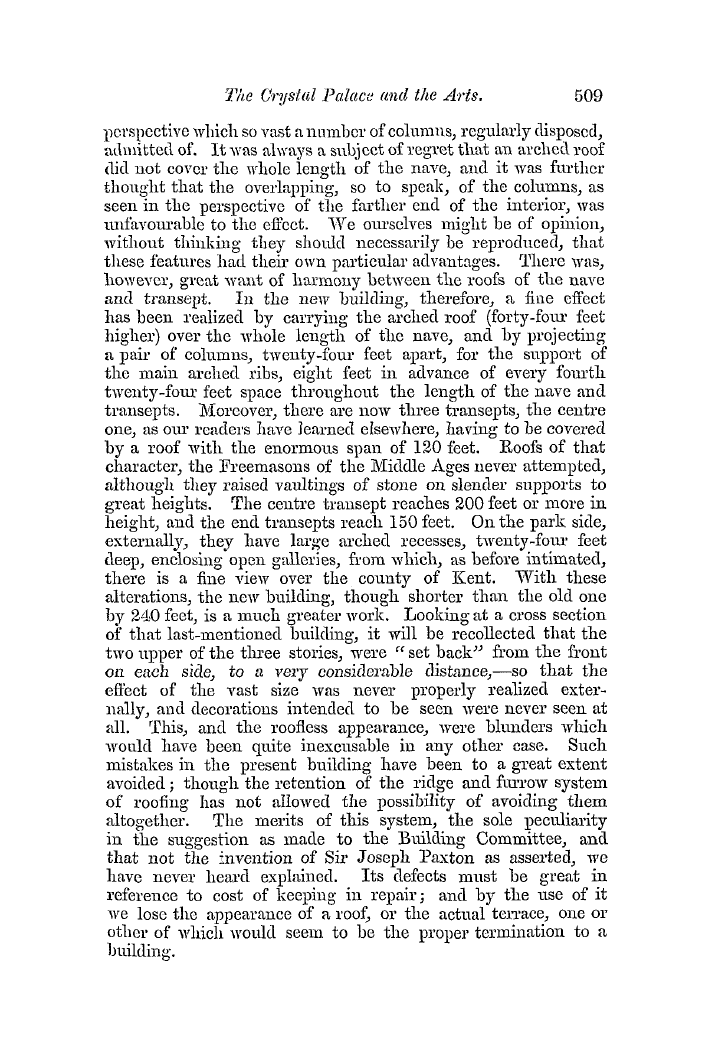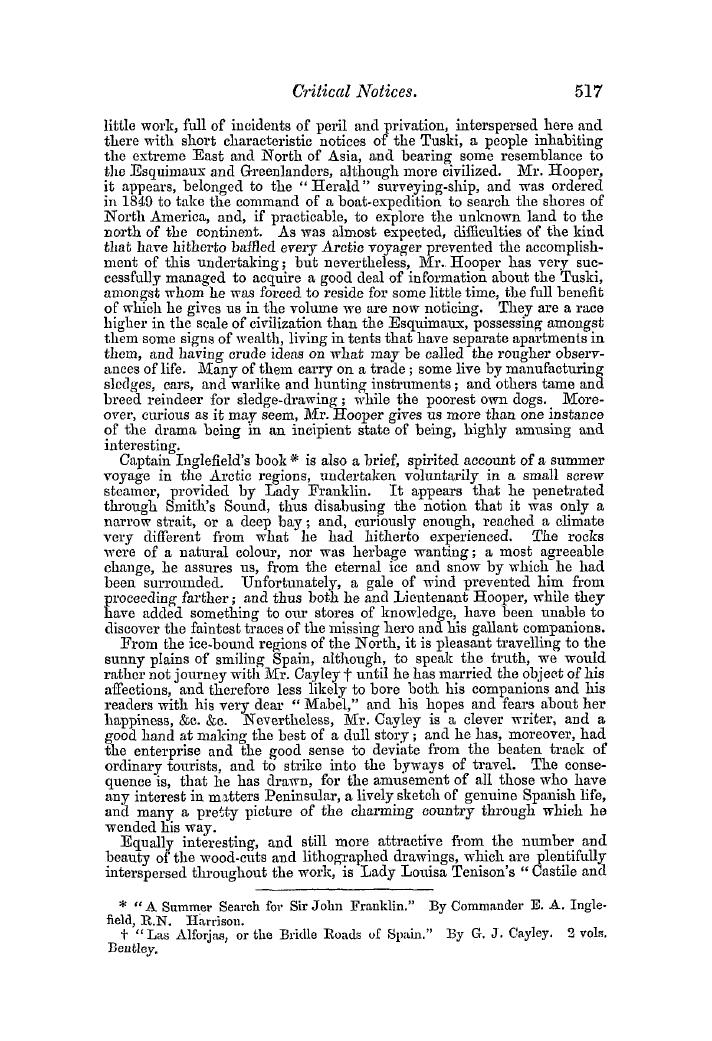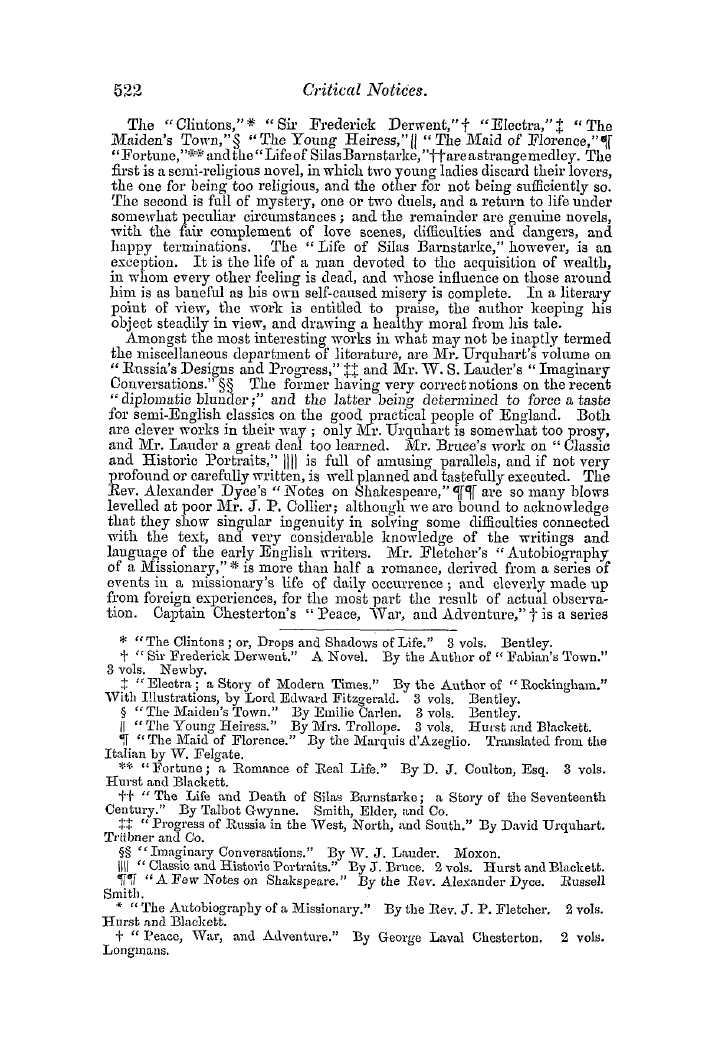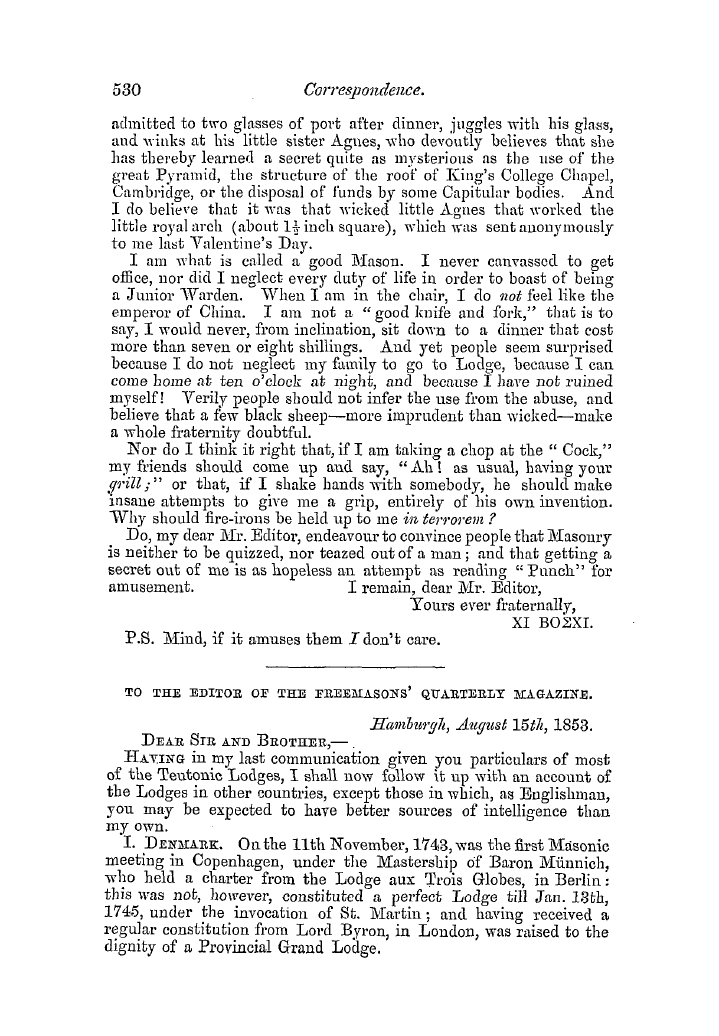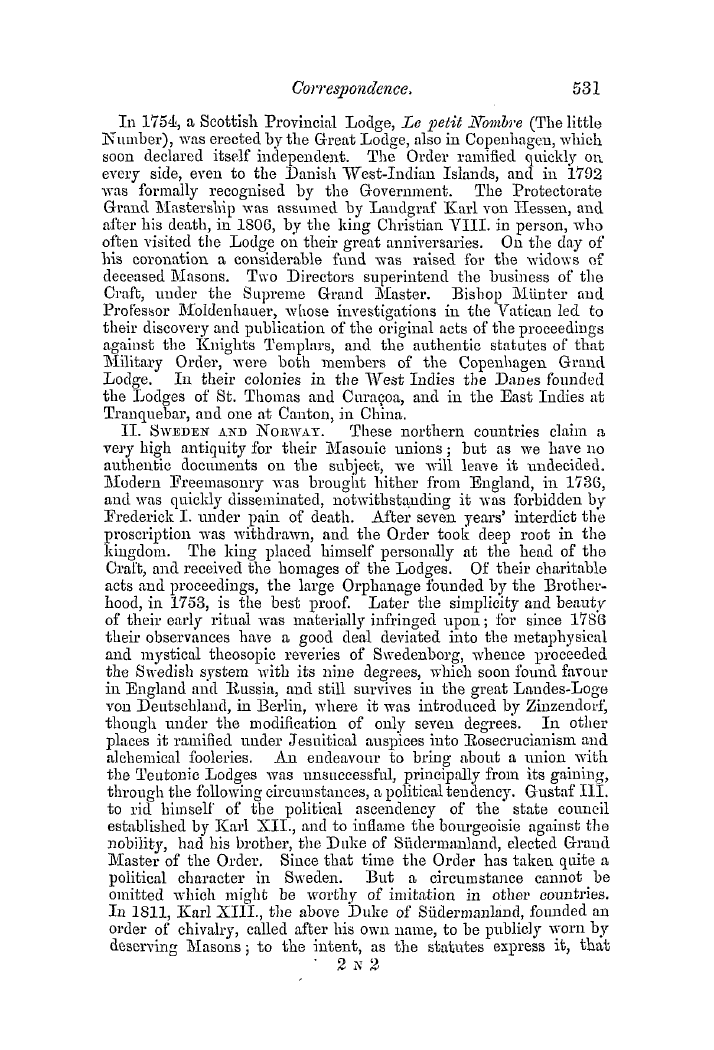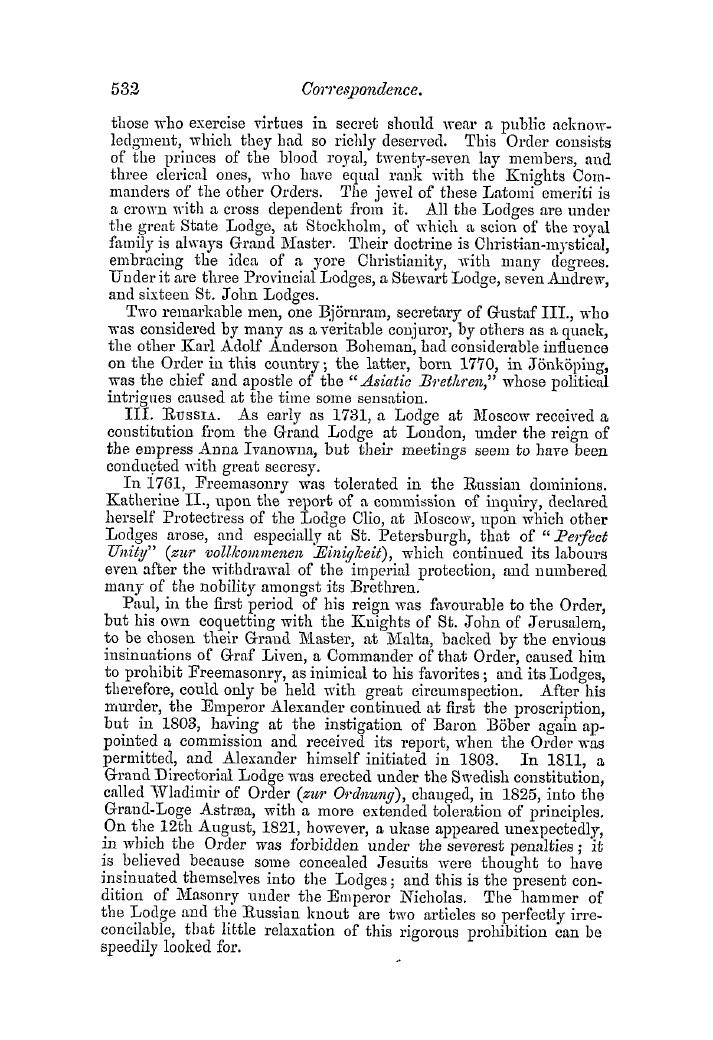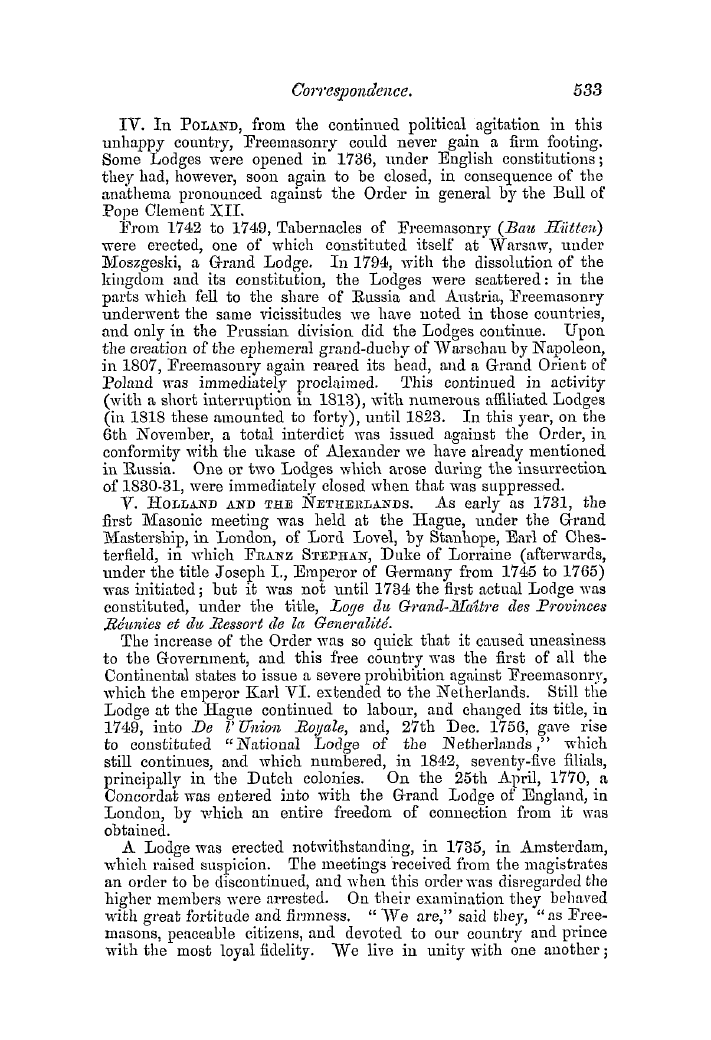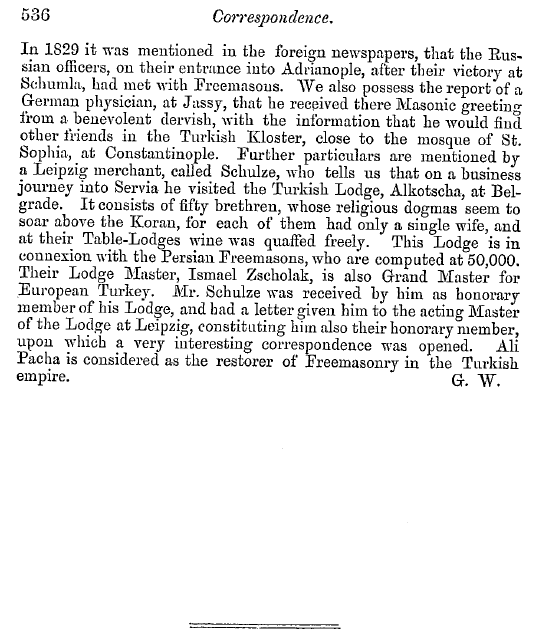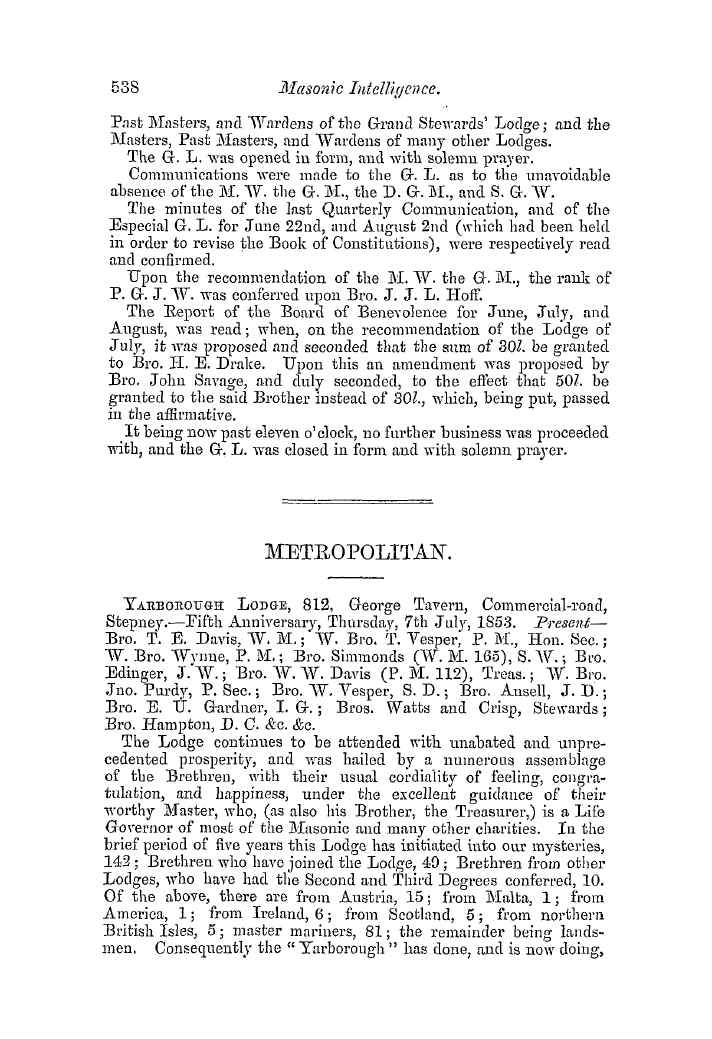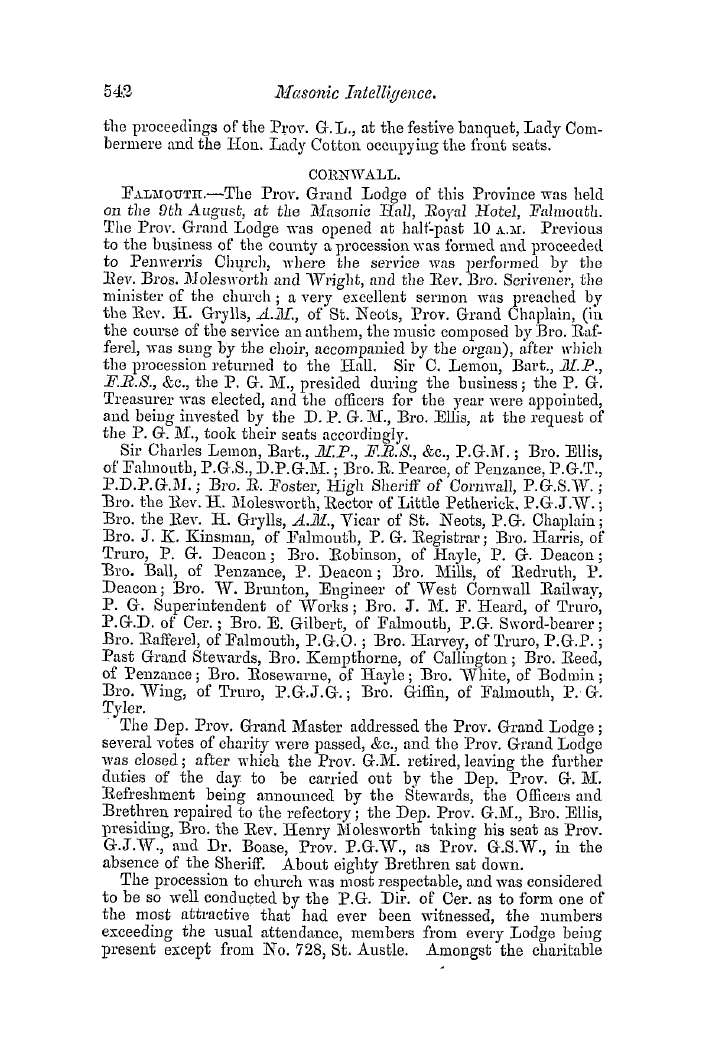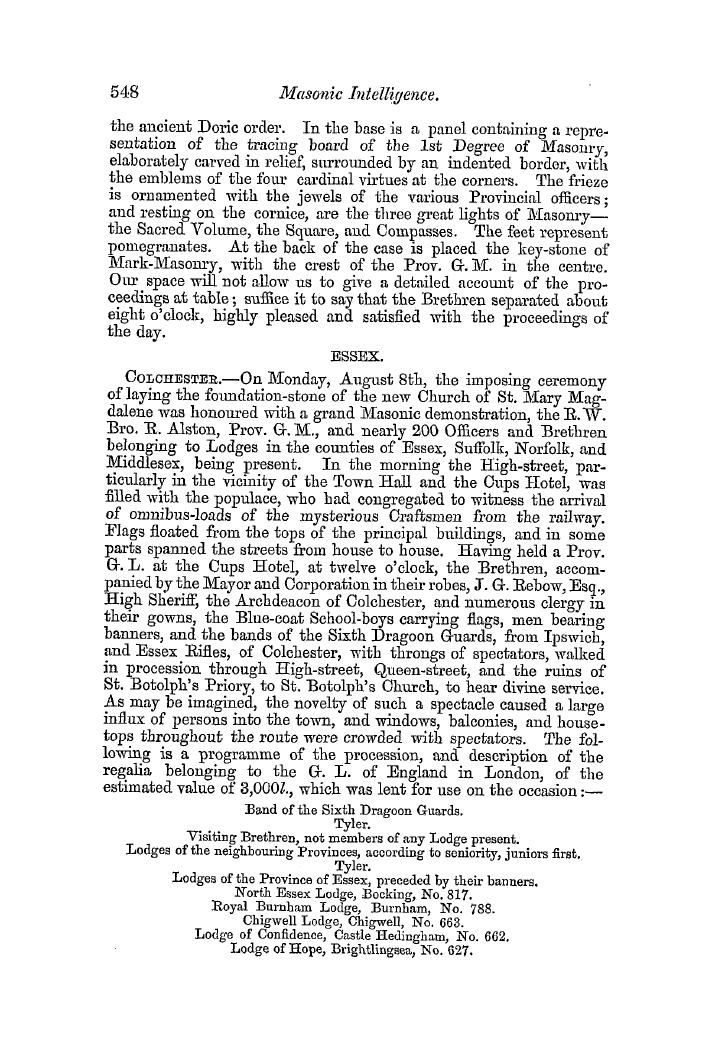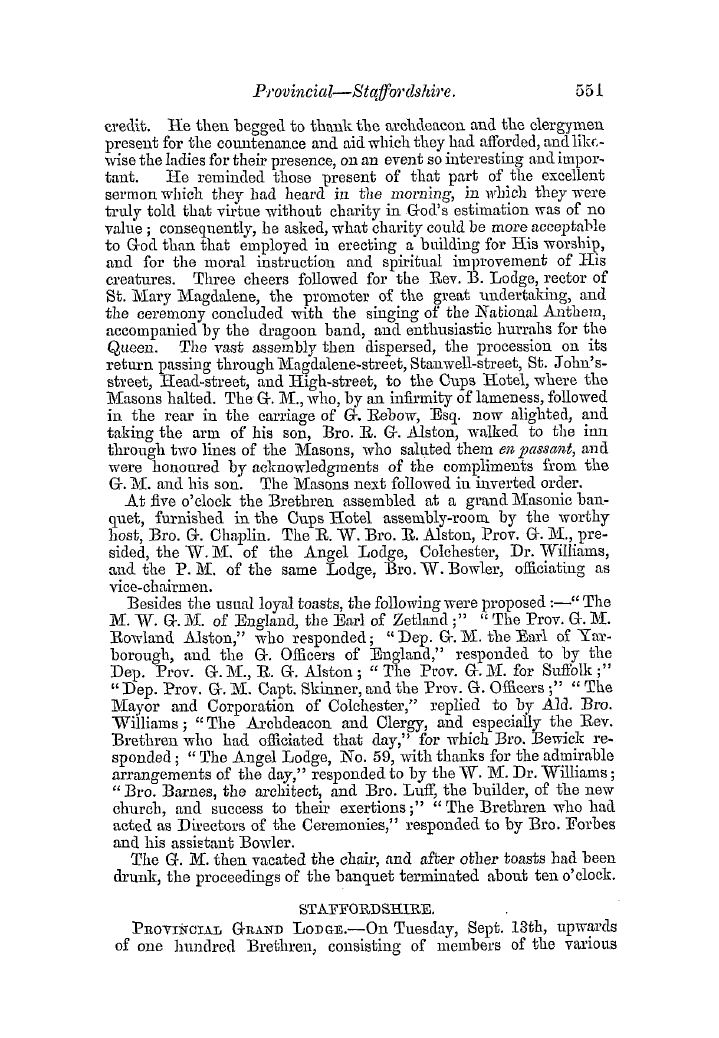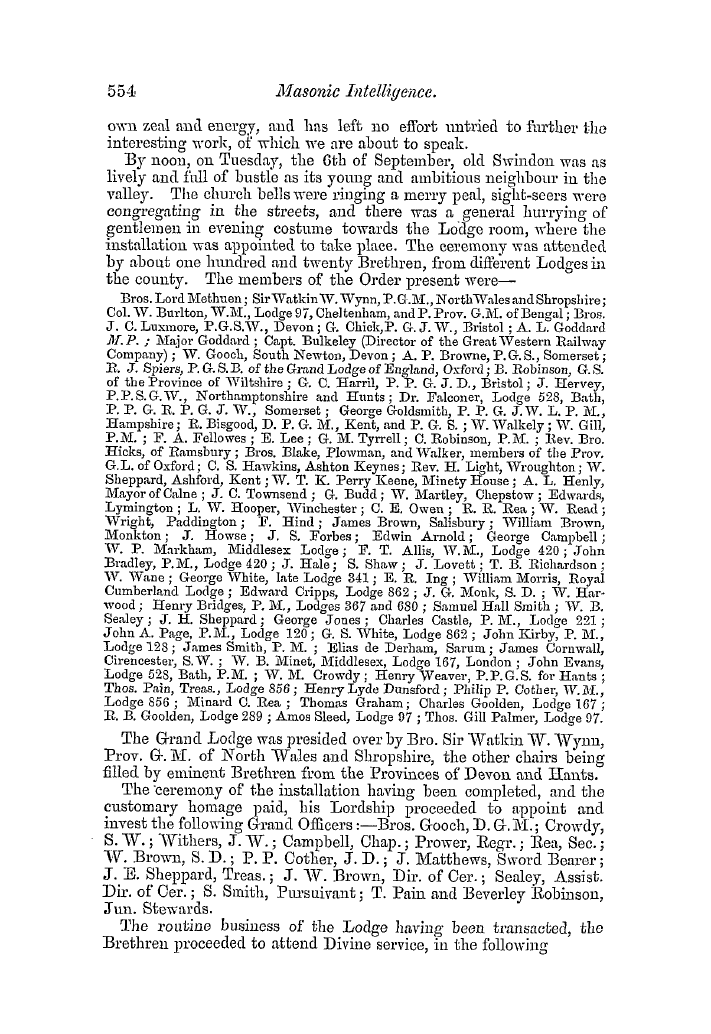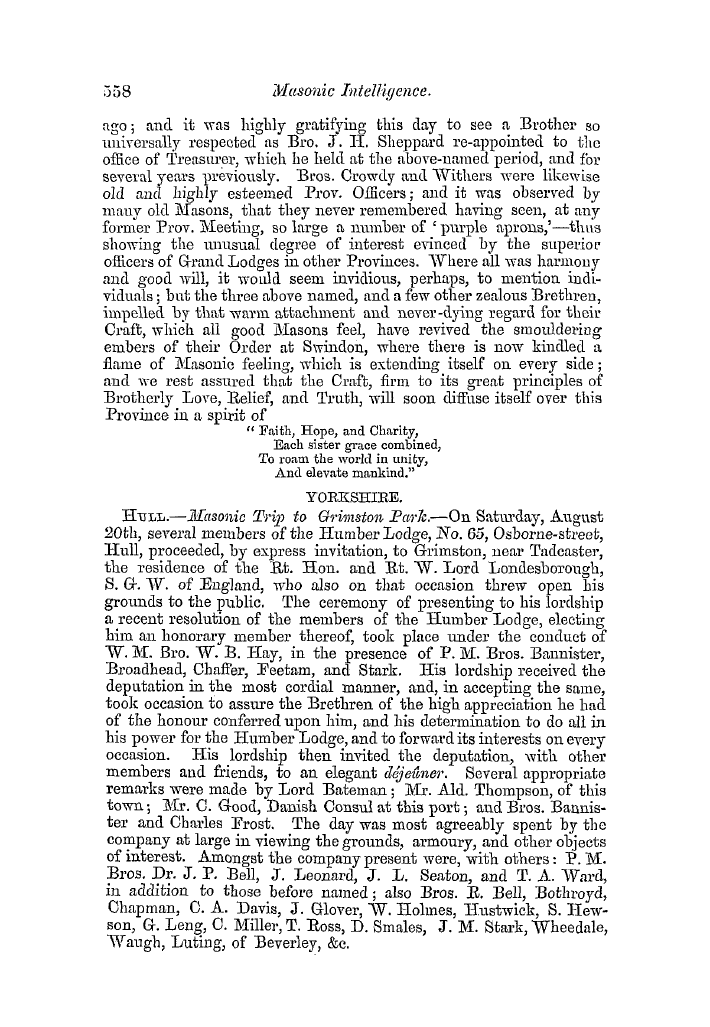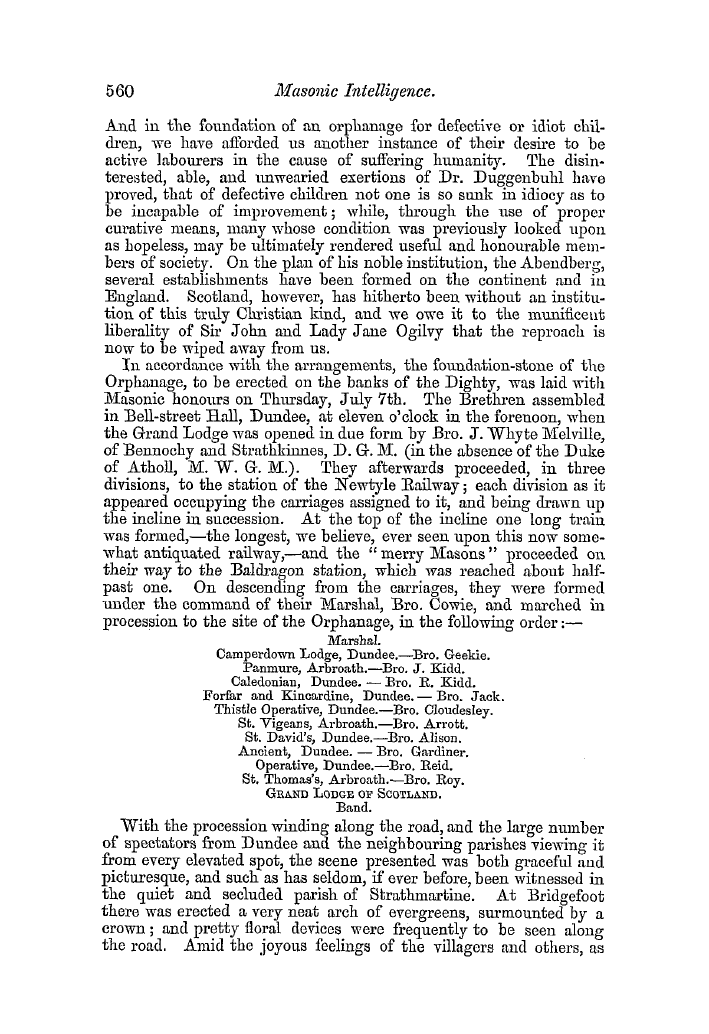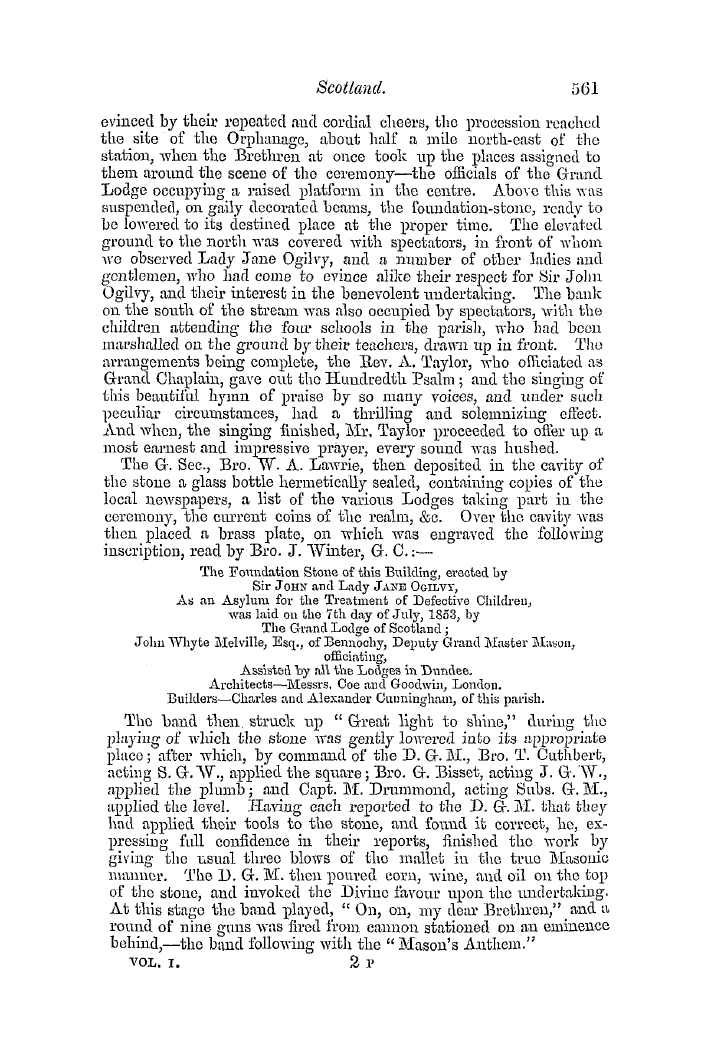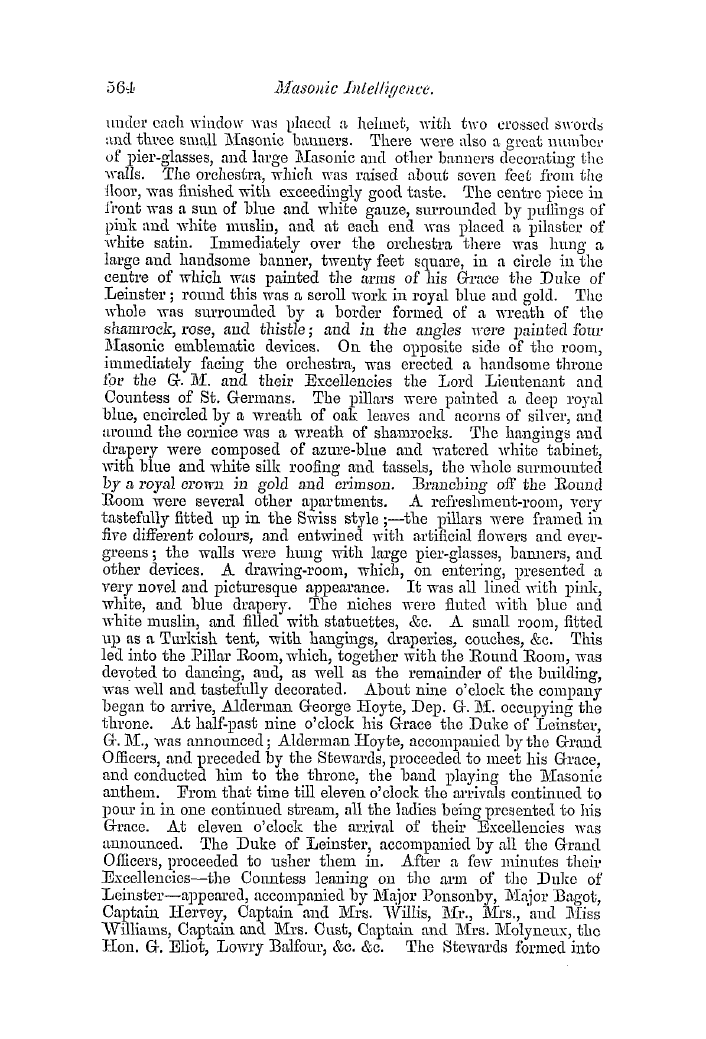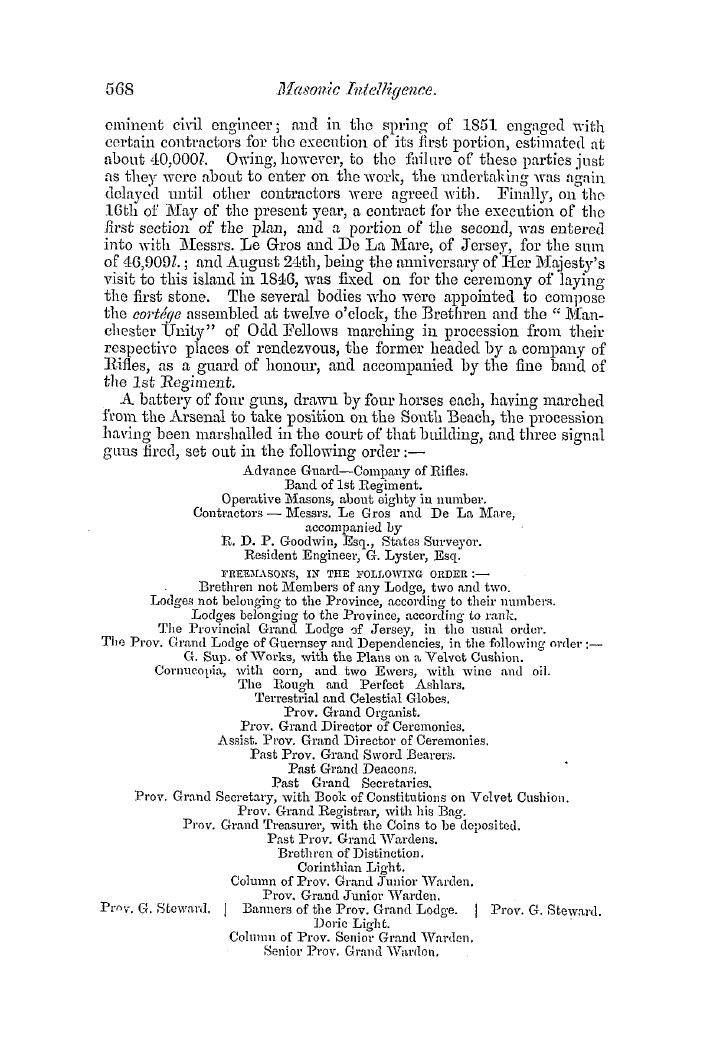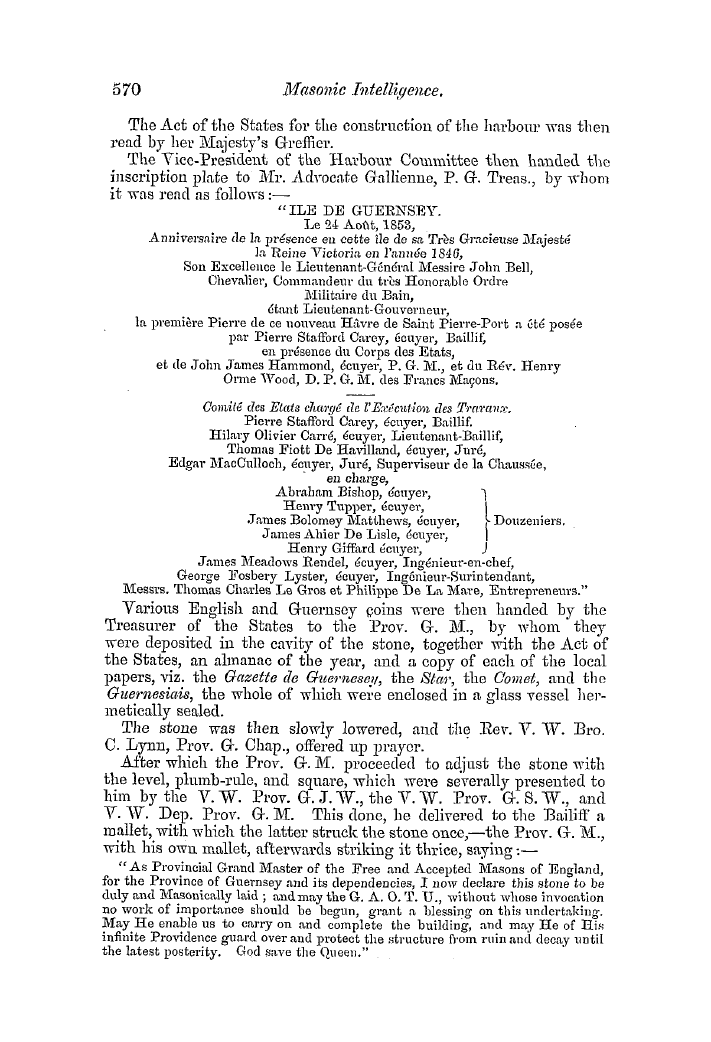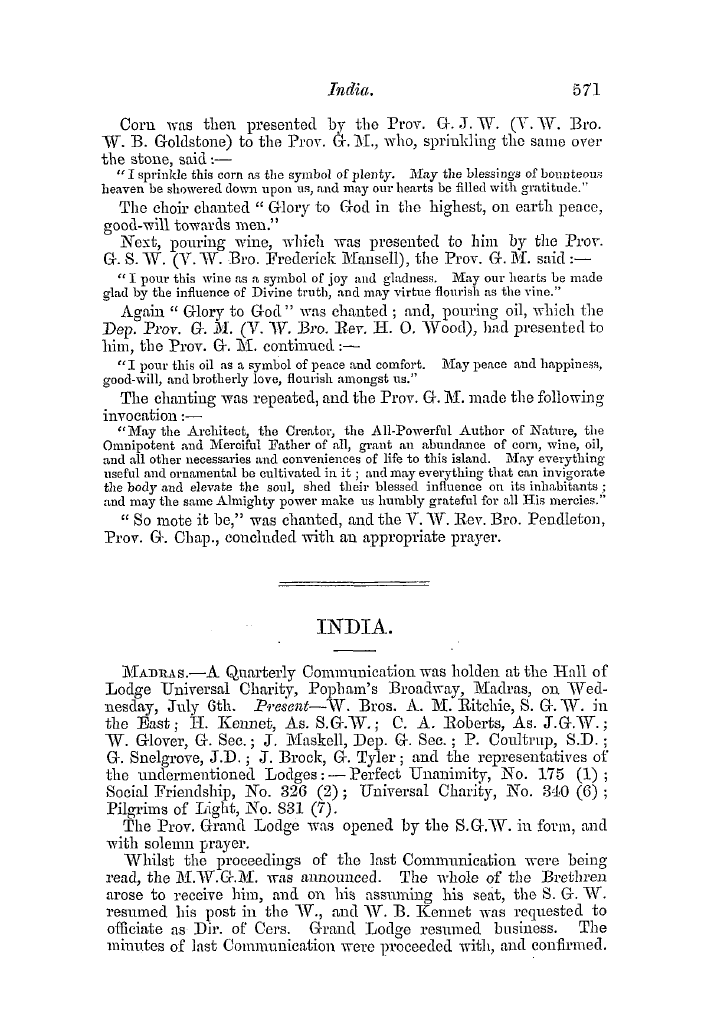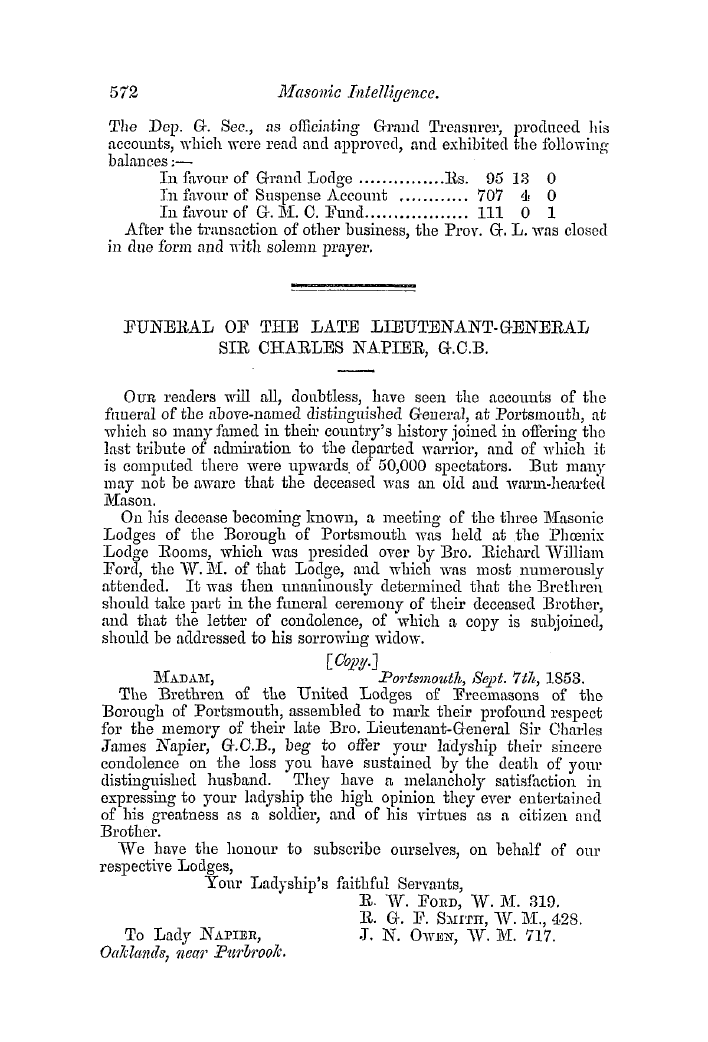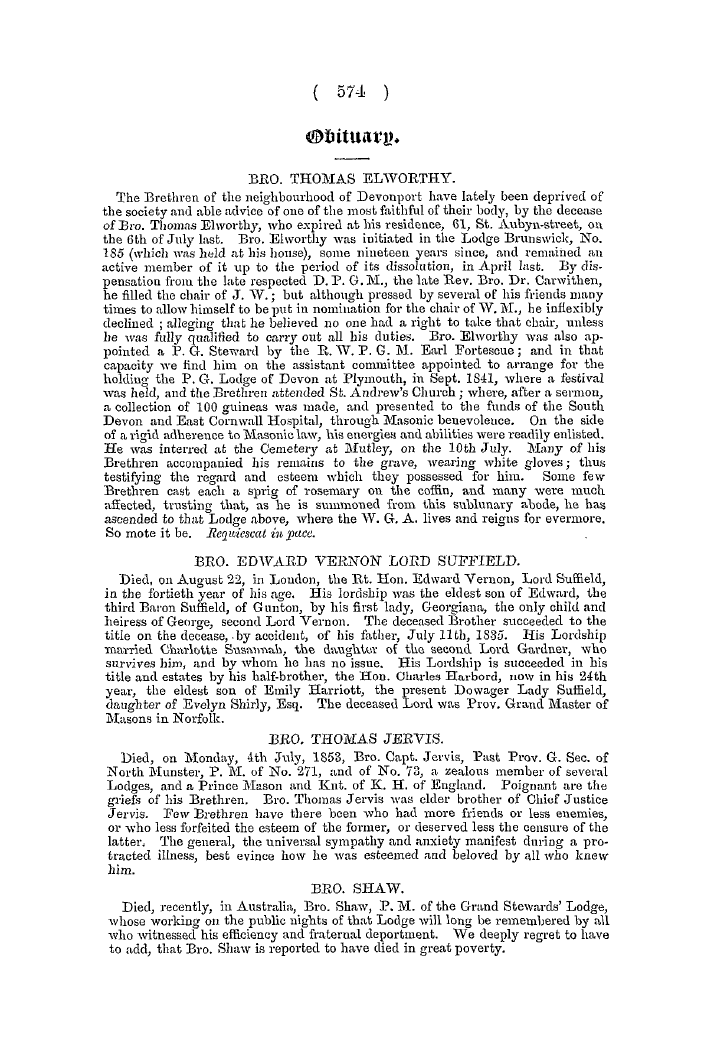-
Articles/Ads
Article ON THE LEGEND OF THE HOLY OR SAN GRAAL; ← Page 16 of 26 →
Note: This text has been automatically extracted via Optical Character Recognition (OCR) software.
On The Legend Of The Holy Or San Graal;
Spain is , however , also the earliest European cradle of the priestly Kni ghts of the Temple ; for it was on the Pyrenees that a Count of Foix gave them , in 1136 , their first Templehouse in Europe , and Spain was the stronghold of the Order . One of the monarchs of Arragon deA'ised them his entire kingdom in feeand when this was proscribed and abolished in
, eA ery other part of Europe , the Peninsular knights , by a mere change of title , in Spain into that of Calatrava , in Portugal that of Do Christo , preserved their property and protected their persons from injury ; thus it may have been , that even at its origin , this species of romance could not Avithdraw from Templar influence . It is certainhoAveverthat the original fiction
, , of the Graal , Avhen it got more extended over a Avider field , became less distinct in outline , less precise . The ideas of the poets themselves are confused concerning it ; beyond a shadowy and fleeting vision , they have no common gatheringground . Sometimes the Graal would appear to be a hero in the flesh , as in the following extract from Caxton ' s " Morte d'Arthur , "
book xiv . cap . ii .: —• " When Merlyn had ordained the rownde table , he said , by them that be fcllowes of the rotmdo table , the truth of the Sangreal shall be knowne , & c . They which heard Merlyn say soe , said thus to Merlyne : Sithenee there shall be such a knight , thou shouldest ordayne by that Craft a siege ( seat ) , that no man should sitte therein but ho only which shall passe all other knights . "
Its personal appearance and human shape seem pointed out also in the fblloAving passages from the same work . " At a celebration of the Feast of Pentecost , at Camelot , by King
" Saitefo © rial , " which seems hitherto to have escaped the notice of all writers on the subject . On the first page , beneath a wood-cut of the Resurrection , is the following title : — fia trenwtra tre sbancto ffittat , © on los marbi'Iljosos firfjos be ? lararof fige Ire ( Saltao ,
mo , 1535 . A MS . note , by the honourable donor , says , regarding it , — " The present edition of 1515 is the earliest that is known in Spanish . The earliest French translation was produced in 1516 , and again in 1530 ; but I have a rare edition of Paris , 1523 . The present copy is purchased from Mr . Heber ' s libraryand his note in it wasthat he had never seen or
, , heard of any other . " A hasty examination satisfied us that our immediate object ( the Sangreal ) was but slightly introduced . Capitulo xxx . p . cii . seems the principal mention of it : — " ( Somo la aSenna © eirrta prenmtto al JBunjel st abi ' 5 jura & o fflanwrote e ( Saluait He nntrar en la trenta & a el Santo © rial . "
Note: This text has been automatically extracted via Optical Character Recognition (OCR) software.
On The Legend Of The Holy Or San Graal;
Spain is , however , also the earliest European cradle of the priestly Kni ghts of the Temple ; for it was on the Pyrenees that a Count of Foix gave them , in 1136 , their first Templehouse in Europe , and Spain was the stronghold of the Order . One of the monarchs of Arragon deA'ised them his entire kingdom in feeand when this was proscribed and abolished in
, eA ery other part of Europe , the Peninsular knights , by a mere change of title , in Spain into that of Calatrava , in Portugal that of Do Christo , preserved their property and protected their persons from injury ; thus it may have been , that even at its origin , this species of romance could not Avithdraw from Templar influence . It is certainhoAveverthat the original fiction
, , of the Graal , Avhen it got more extended over a Avider field , became less distinct in outline , less precise . The ideas of the poets themselves are confused concerning it ; beyond a shadowy and fleeting vision , they have no common gatheringground . Sometimes the Graal would appear to be a hero in the flesh , as in the following extract from Caxton ' s " Morte d'Arthur , "
book xiv . cap . ii .: —• " When Merlyn had ordained the rownde table , he said , by them that be fcllowes of the rotmdo table , the truth of the Sangreal shall be knowne , & c . They which heard Merlyn say soe , said thus to Merlyne : Sithenee there shall be such a knight , thou shouldest ordayne by that Craft a siege ( seat ) , that no man should sitte therein but ho only which shall passe all other knights . "
Its personal appearance and human shape seem pointed out also in the fblloAving passages from the same work . " At a celebration of the Feast of Pentecost , at Camelot , by King
" Saitefo © rial , " which seems hitherto to have escaped the notice of all writers on the subject . On the first page , beneath a wood-cut of the Resurrection , is the following title : — fia trenwtra tre sbancto ffittat , © on los marbi'Iljosos firfjos be ? lararof fige Ire ( Saltao ,
mo , 1535 . A MS . note , by the honourable donor , says , regarding it , — " The present edition of 1515 is the earliest that is known in Spanish . The earliest French translation was produced in 1516 , and again in 1530 ; but I have a rare edition of Paris , 1523 . The present copy is purchased from Mr . Heber ' s libraryand his note in it wasthat he had never seen or
, , heard of any other . " A hasty examination satisfied us that our immediate object ( the Sangreal ) was but slightly introduced . Capitulo xxx . p . cii . seems the principal mention of it : — " ( Somo la aSenna © eirrta prenmtto al JBunjel st abi ' 5 jura & o fflanwrote e ( Saluait He nntrar en la trenta & a el Santo © rial . "
